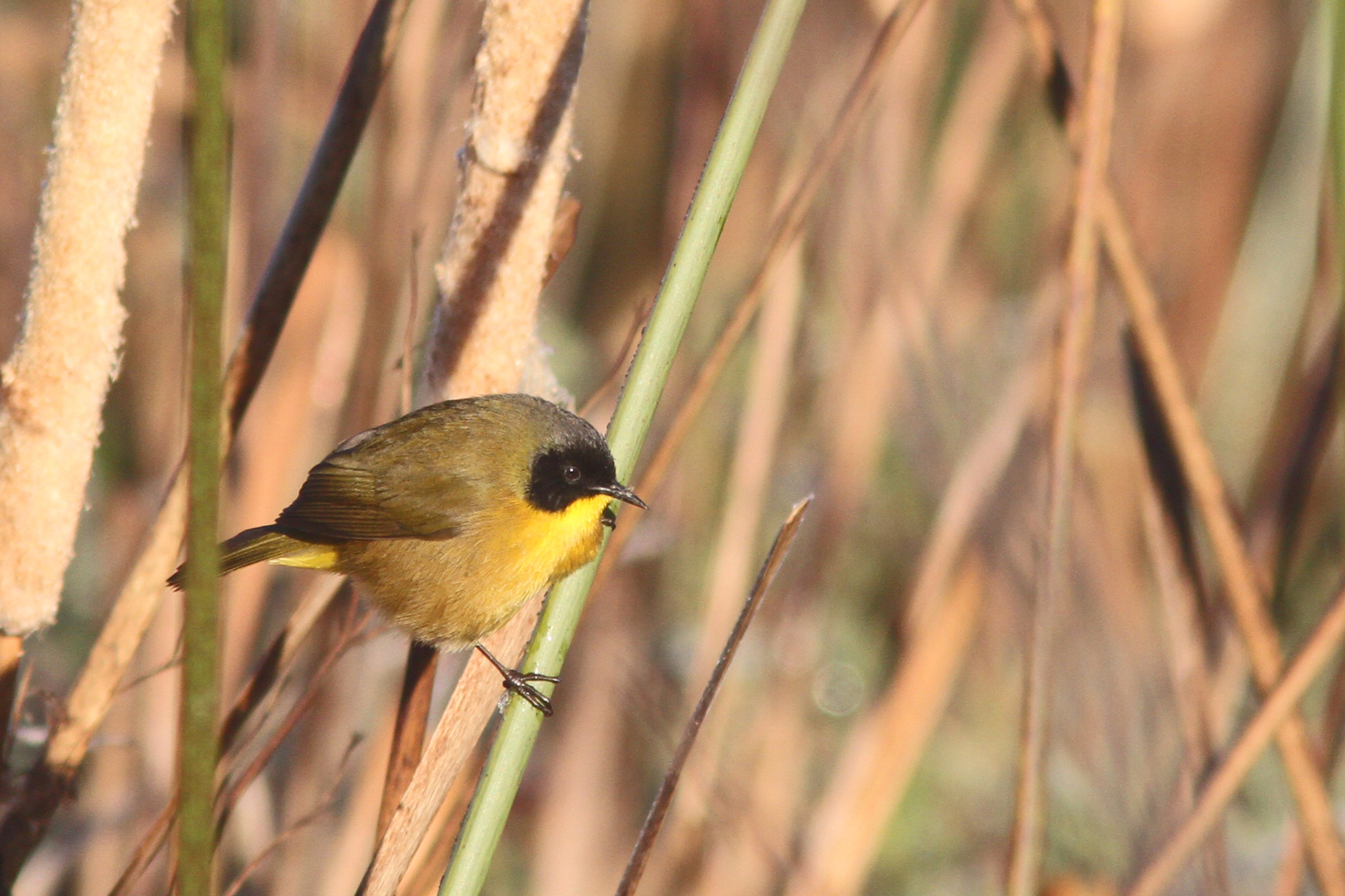 |
| Black polled Yellowthroaot, Lerma Marsh, Mexico state, Mexico, Jan 31, 2019 |
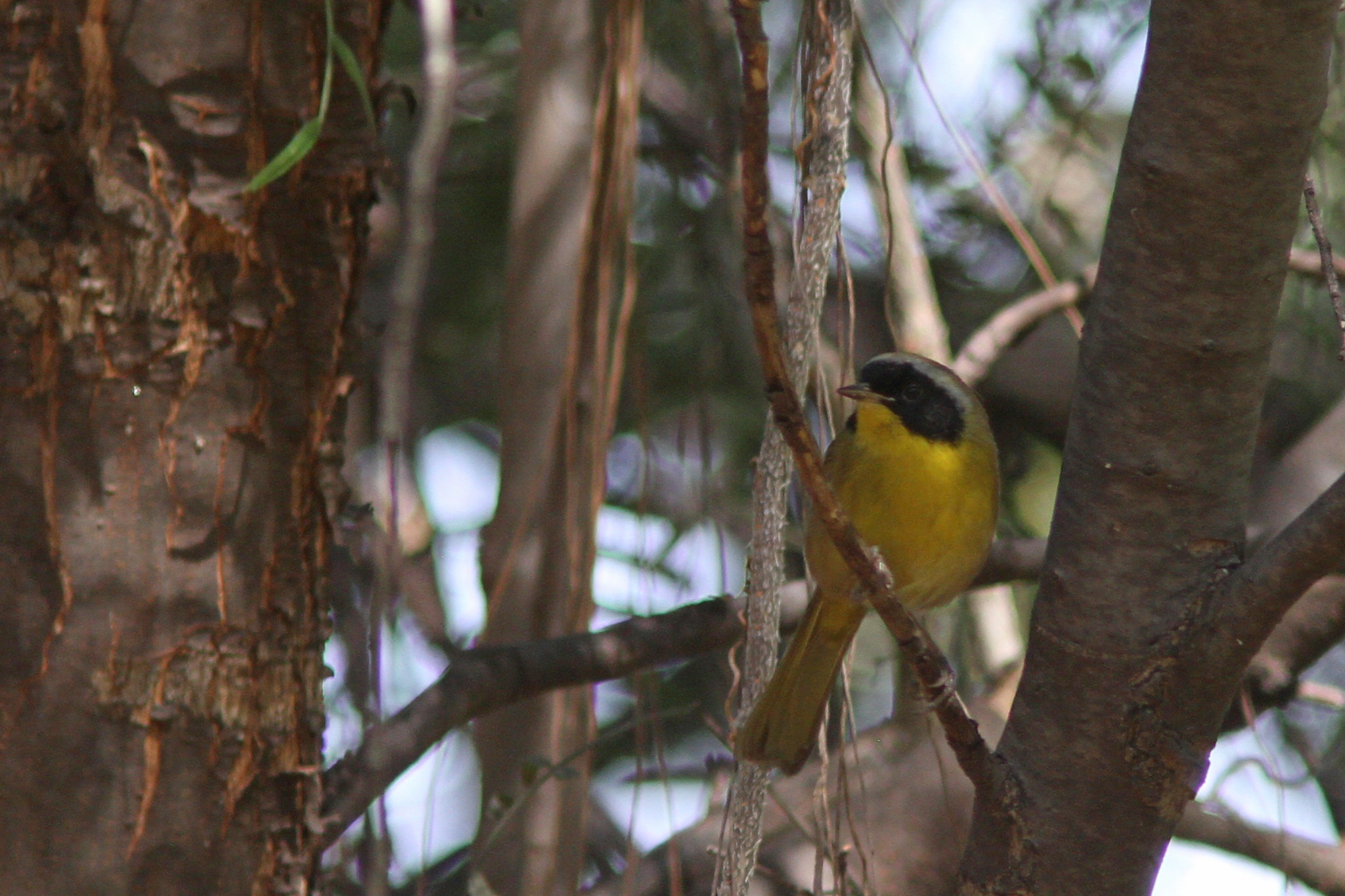 |
| Hooded Yellowthroat, Jardín Botánico del Instituto de Biología UNAM, Mexico City, Mexico, Jan 31, 2019 |
 |
| Red Warbler, Parque Ejidal San Nicolás Totolapan,Mexico City, Jan 31, 2019 |
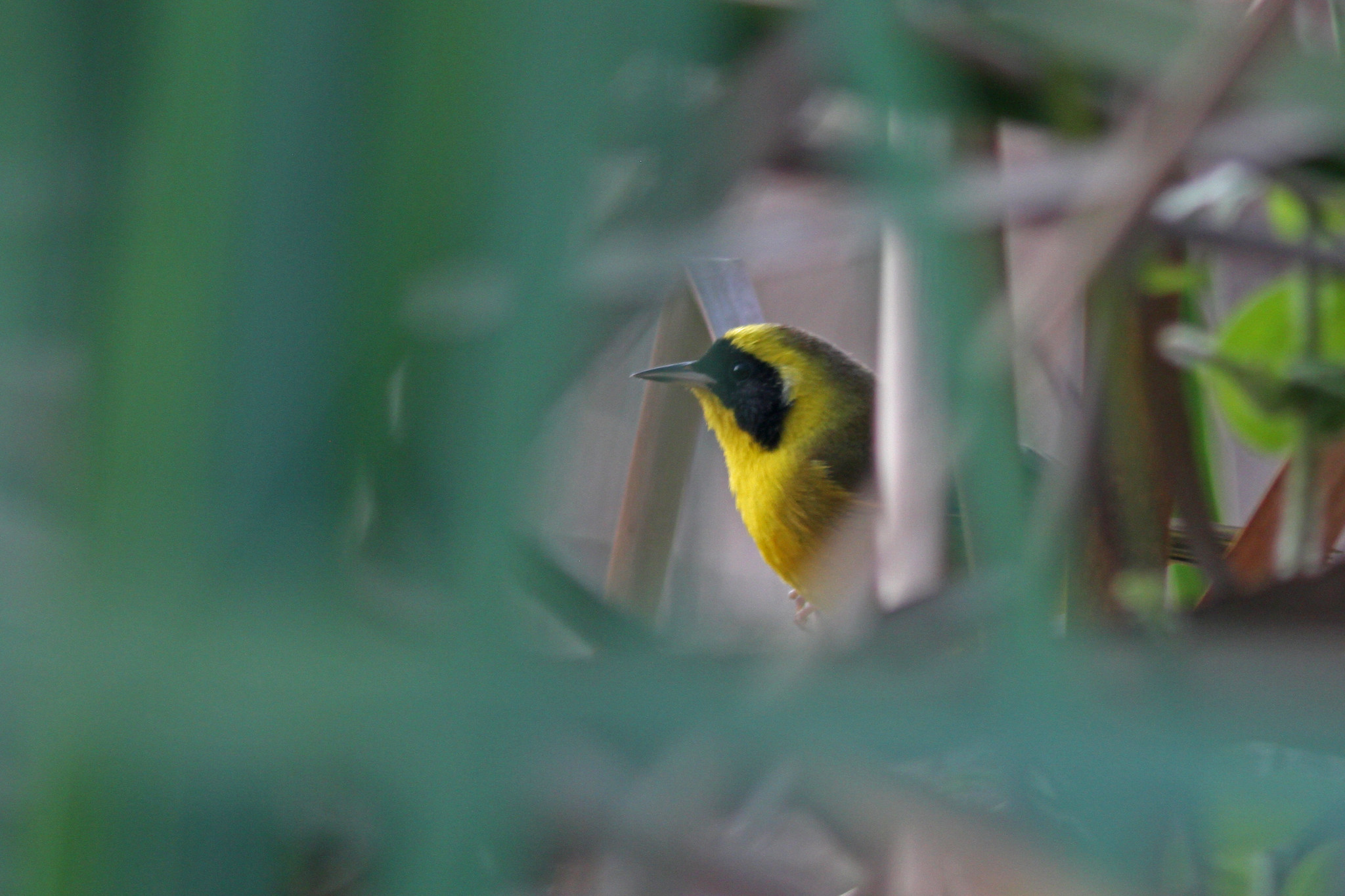 |
| Altamira Yellowthroat, Rt 85, Tamaulipas, Mexico, Feb 2, 2019 |
I returned last week from a trip down to Mexico in search of four endemic warblers (plus other previously unseen species in the area). The trip consisted of two separate parts with the first being the Mexico City area to find Black polled Yellowthroat, Hooded Yellowthroat and Red Warbler and the second being southern Tamaulipas in search of Altamira Yellowthroat (a more detailed post on the warblers at the following
warbler link). I was very happy to find all my targets as well as lots of other good stuff. A big thank you to the guides I used who knew exactly where to go to get the birds (more details on the guides at the end of the post). I arrived into Mexico City very late in the evening on January 30th and thankfully made it through customs and immigration relatively quickly and then got picked up for the drive through the traffic that is Mexico City (even late in the evening). I got to my lodging in the La Condesa area of the city and headed to bed to be rested for the full day of birding ahead while I fought the lingering effects of a cold.
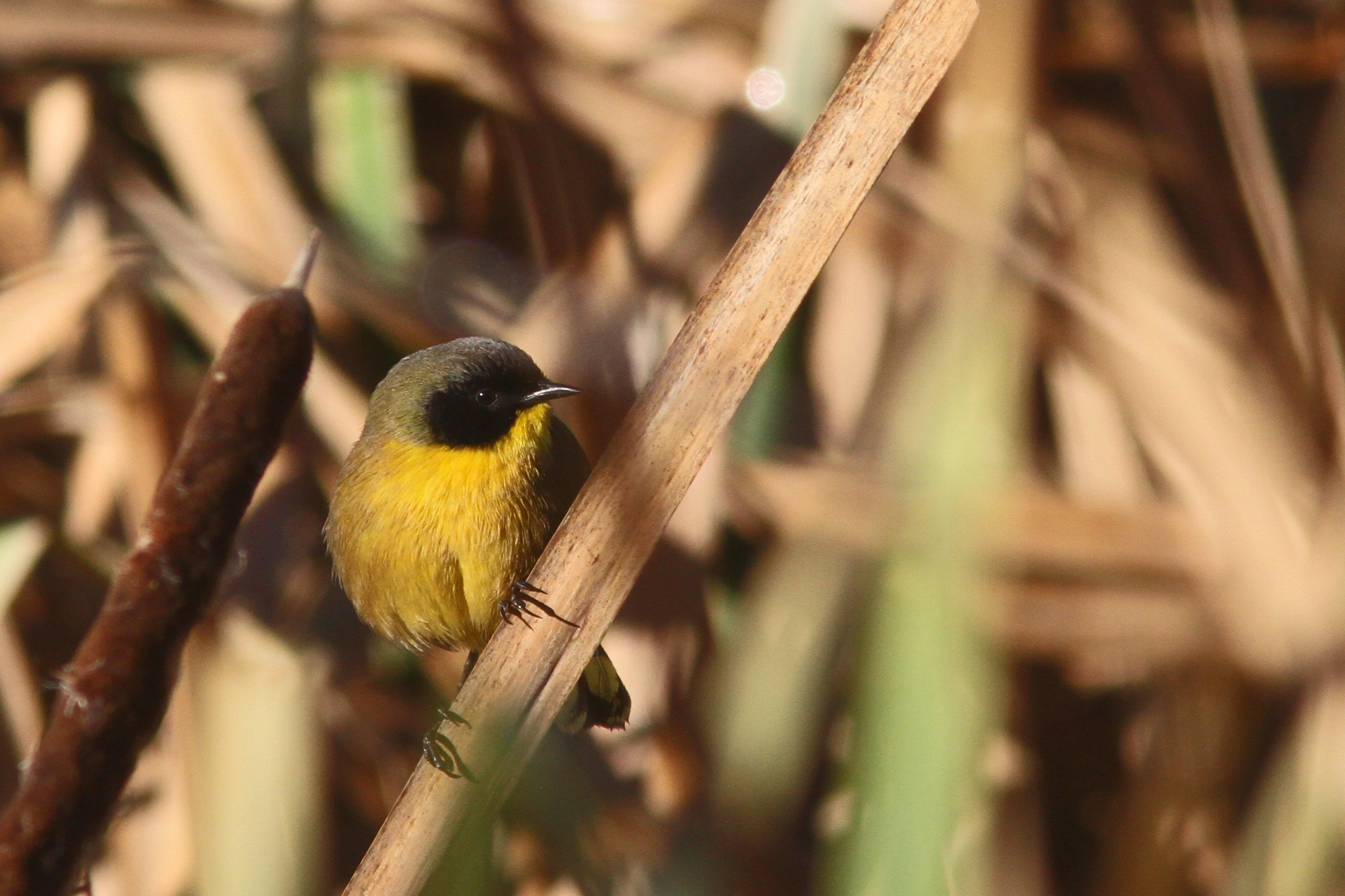 |
| Black polled Yellowthroaot, Lerma Marsh, Mexico state, Mexico, Jan 31, 2019 |
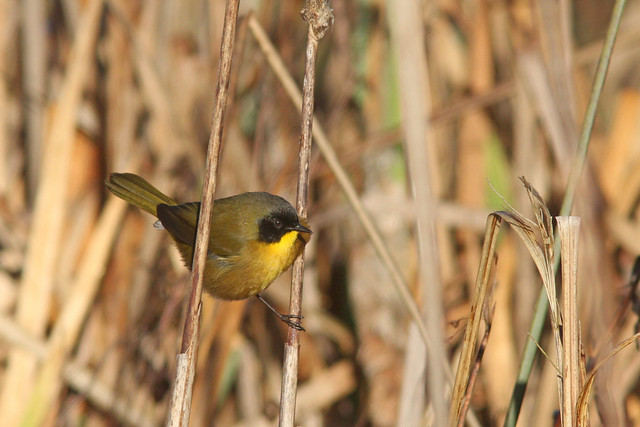 |
| Black polled Yellowthroat, Lerma Marsh, Mexico state, Mexico, Jan 31, 2019 |
 |
| Song Sparrow (mexican), Lerma Marsh, Mexico state, Mexico, Jan 31, 2019 |
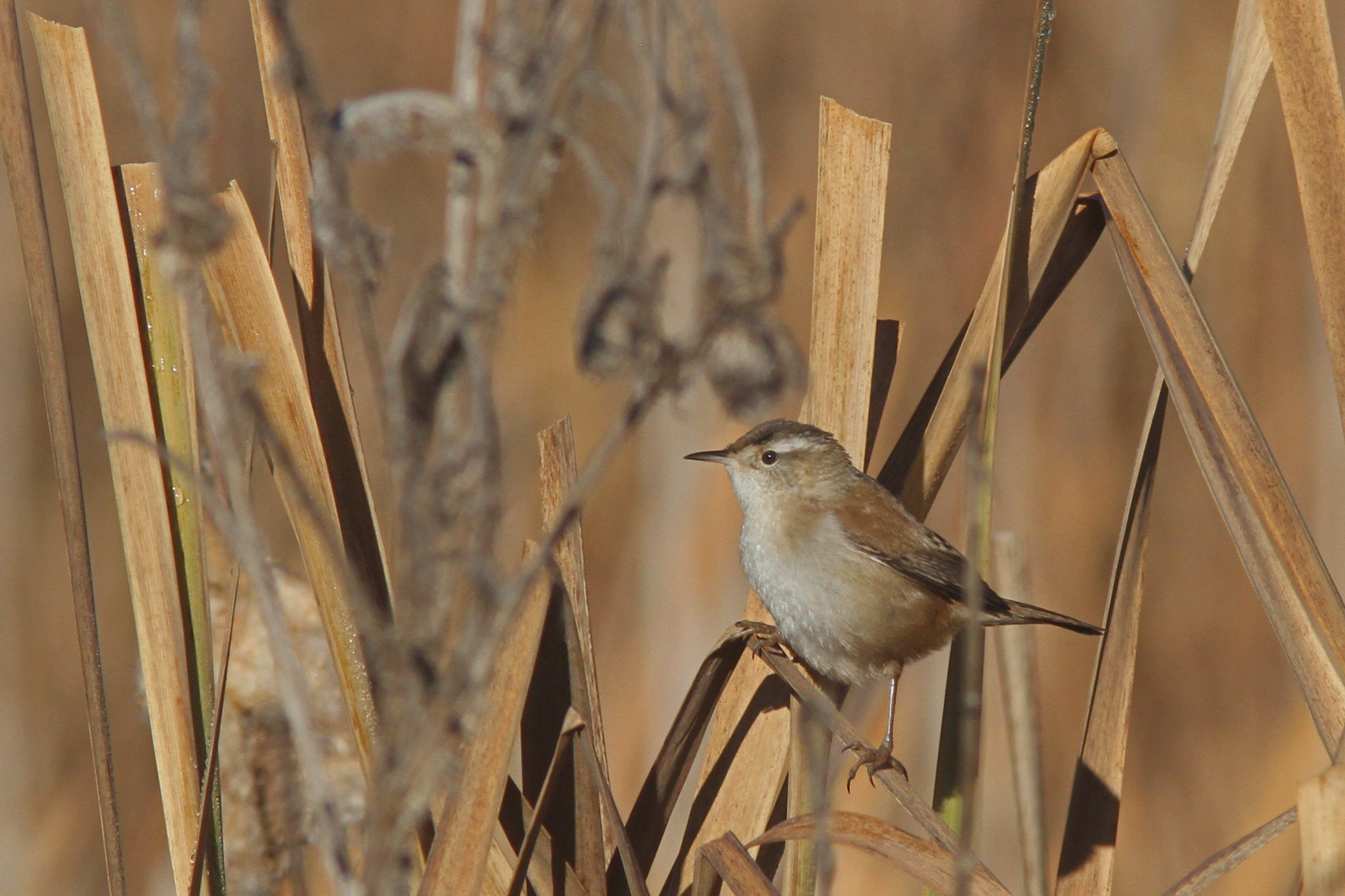 |
| Marsh Wren, Lerma Marsh, Mexico state, Mexico, Jan 31, 2019 |
 |
| Lerma Marsh, Mexico state, Mexico, Jan 31, 2019 |
I got picked up at 6AM by Rafa and Isian and we were on our way to the west outside the city. We drove approximately an hour to the
Lerma Marshes in search of our first target, Black polled Yellowthroat. It was quite chilly there to start the morning with temps just below freezing (still much warmer than home where it was -11!). Once the sun came up it warmed up and the birds became more active. We got great looks at multiple Black polled Yellowthroats during our time there and loads of photos. The marshes also held lots of other good stuff including thousands of Yellow headed and Red winged Blackbirds (I saw more Yellow headed Blackbirds in a few minutes time then I have seen in my entire life until that point). There was also lots of the resident subspecies of Song Sparrow that sound slightly different, behave different (stay near water and always have their tails cocked up) and are not migratory (perhaps a different species altogether?). There were also a number of rails calling including my first Aztec Rails. After a bit over an hour and half we were on our way back east to the city.
 |
| Hooded Yellowthroat, Jardín Botánico del Instituto de Biología UNAM, Mexico City, Mexico, Jan 31, 2019 |
 |
| Hooded Yellowthroat, Jardín Botánico del Instituto de Biología UNAM, Mexico City, Mexico, Jan 31, 2019 |
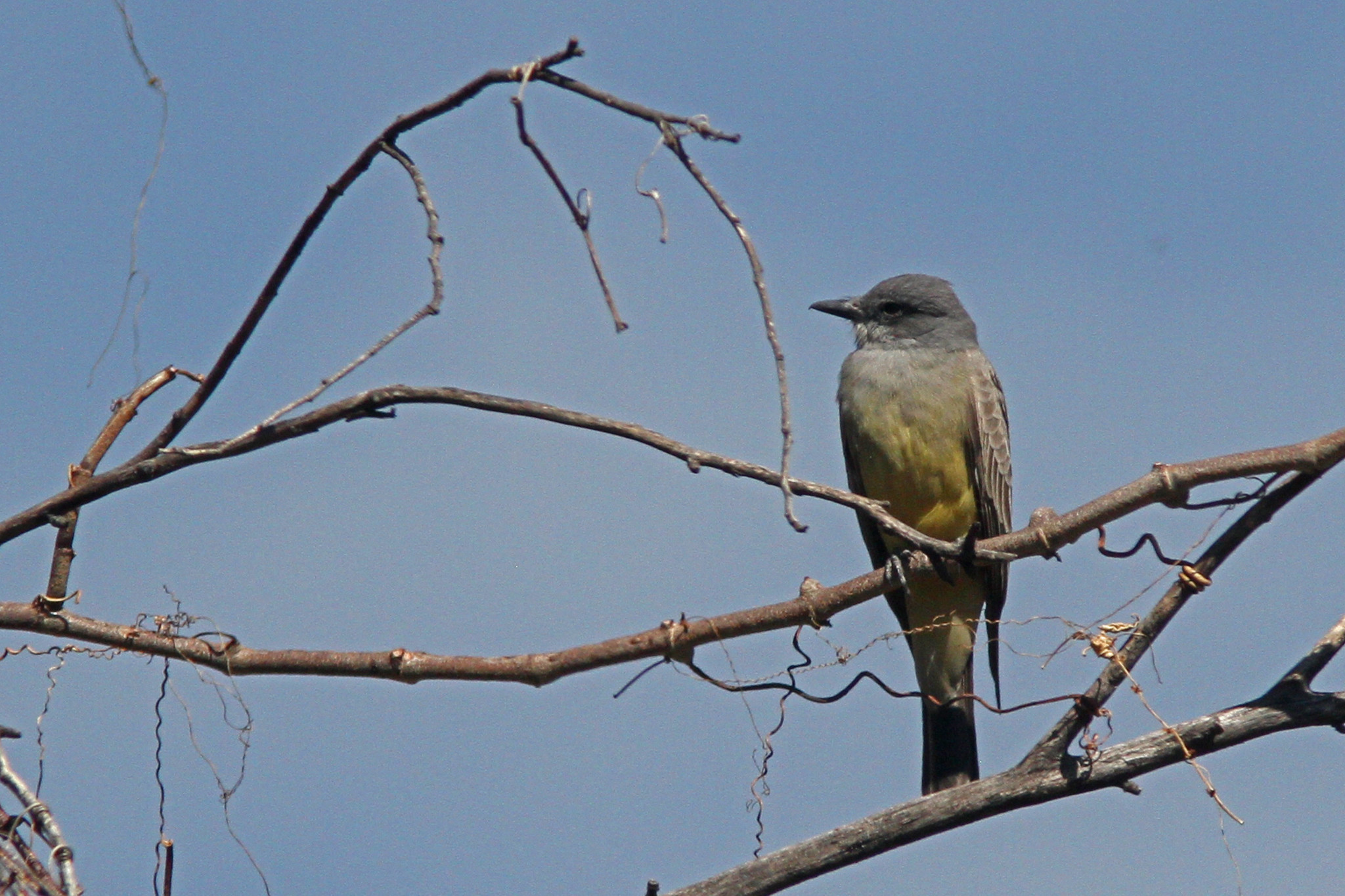 |
| Cassin's Kingbird, Jardín Botánico del Instituto de Biología UNAM, Mexico City, Mexico, Jan 31, 2019 |
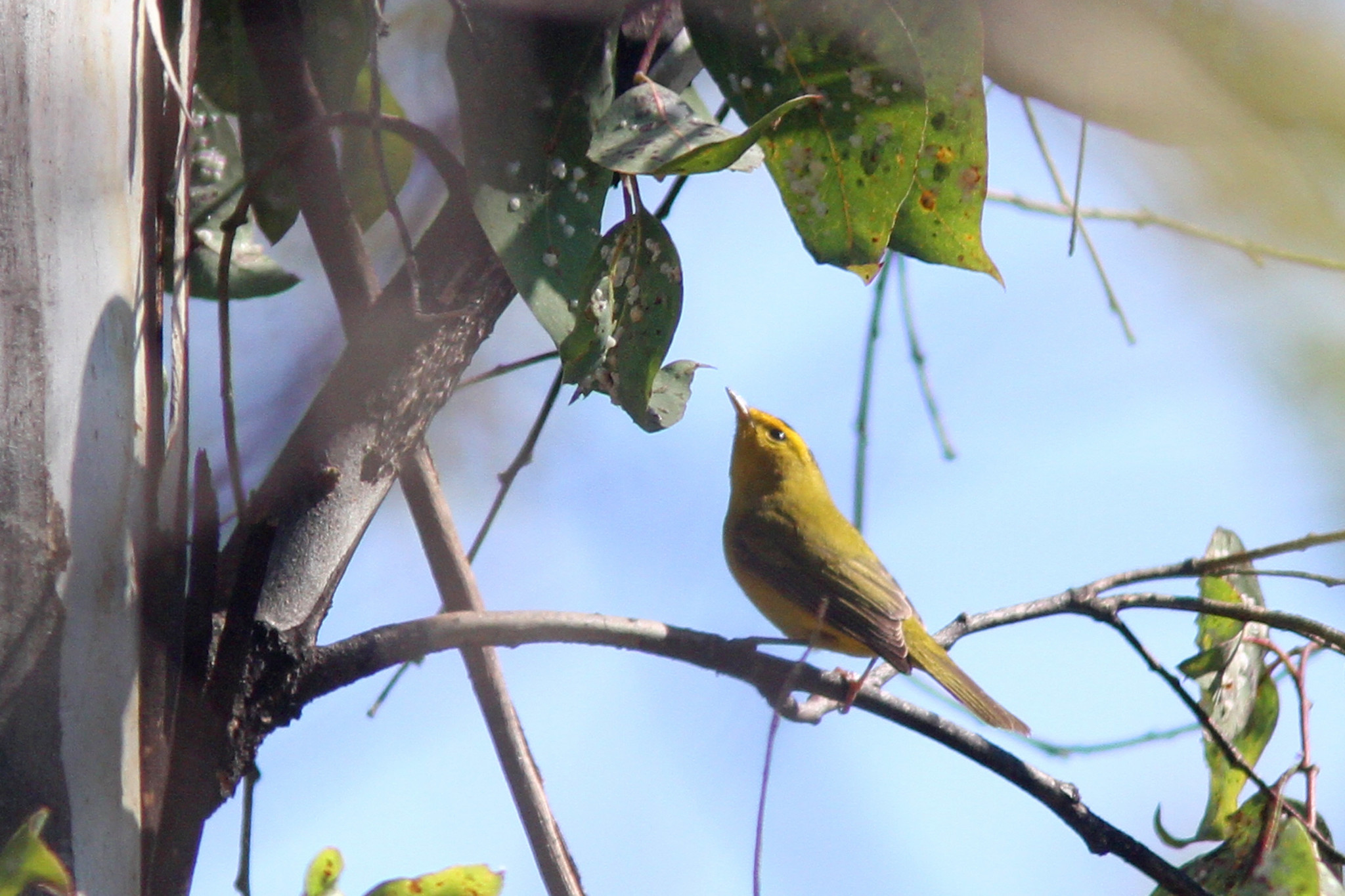 |
| Wilson's Warbler, Jardín Botánico del Instituto de Biología UNAM, Mexico City, Mexico, Jan 31, 2019 |
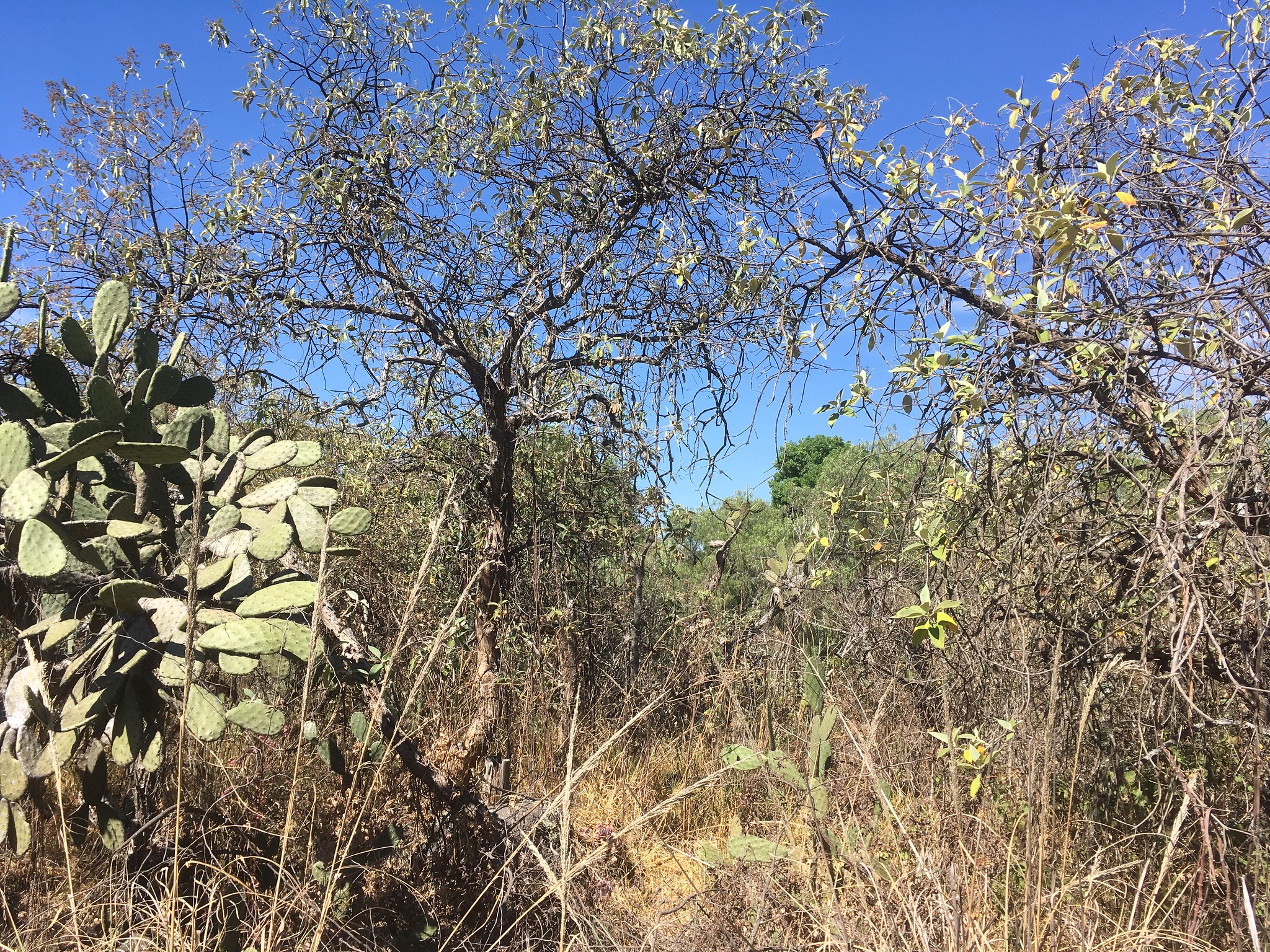 |
| Hooded Yellowthroat habitat, Jardín Botánico del Instituto de Biología UNAM, Mexico City, Mexico, Jan 31, 2019 |
Our next stop was to the biological gardens at a large university back in Mexico City (
Jardín Botánico del Instituto de Biología UNAM) . The gardens are part of a larger area of protected scrub land which is the habitat that the Hooded Yellowthroat can be found in. Although the species looks quite similar to Common Yellowthroat it has subtle physical traits that set it apart as well as different calls, songs and habitat preferences. Of the three warblers I was in search of in the Mexico City area this was the one that can be the hardest to find when not singing (which it was not doing during my time down there). We checked several areas that sometimes produce the species with no luck until we got brief looks at a skulking male that never stayed in view for more than a few seconds. We then moved to another area that produced a much more cooperative male that called constantly and showed quite well for such a skulking species. During our time looking for the yellowthroat we had several groups of other migrant species spending the winter in the area.
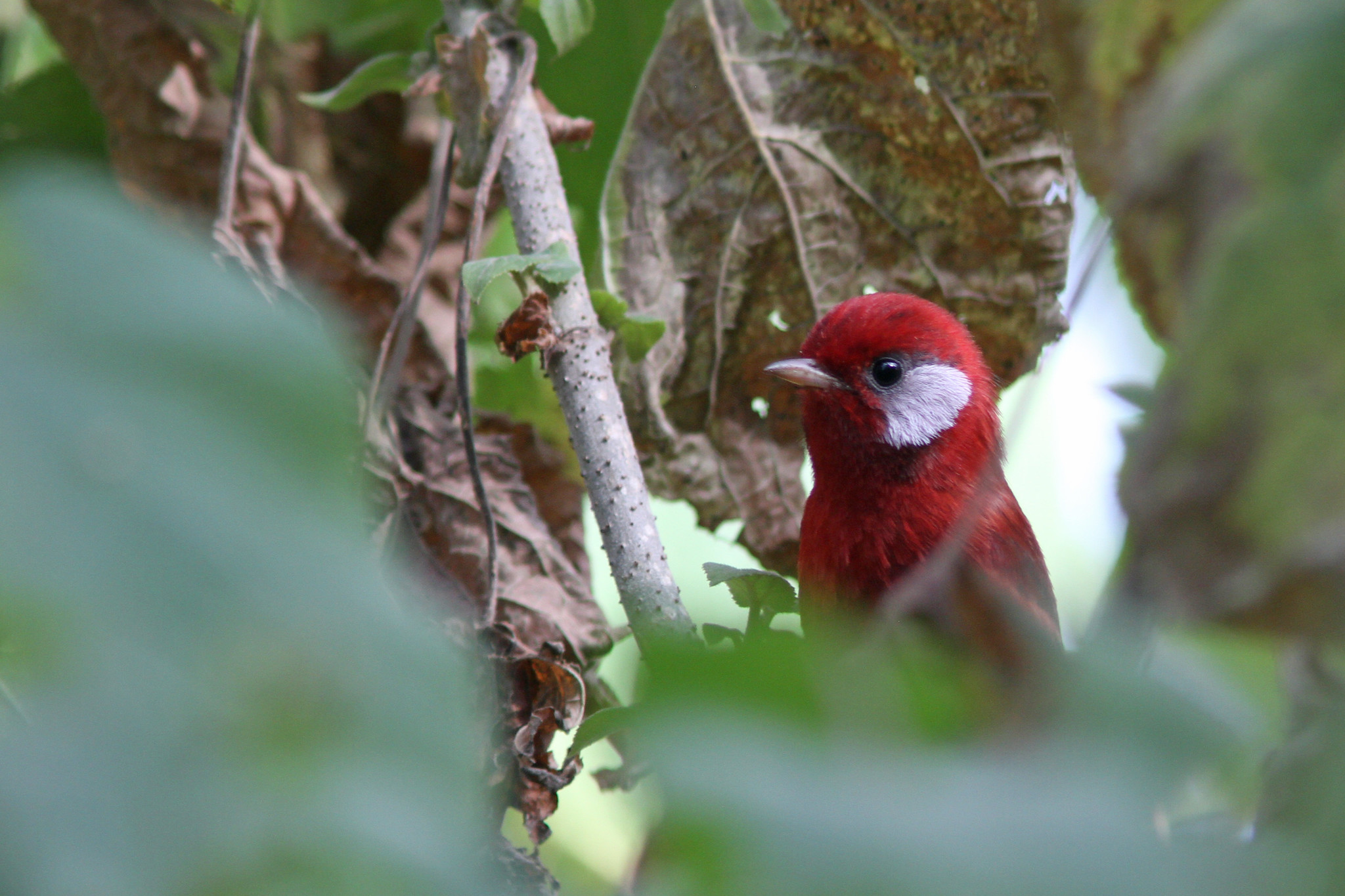 |
| Red Warbler, Parque Ejidal San Nicolás Totolapan,Mexico City, Jan 31, 2019 |
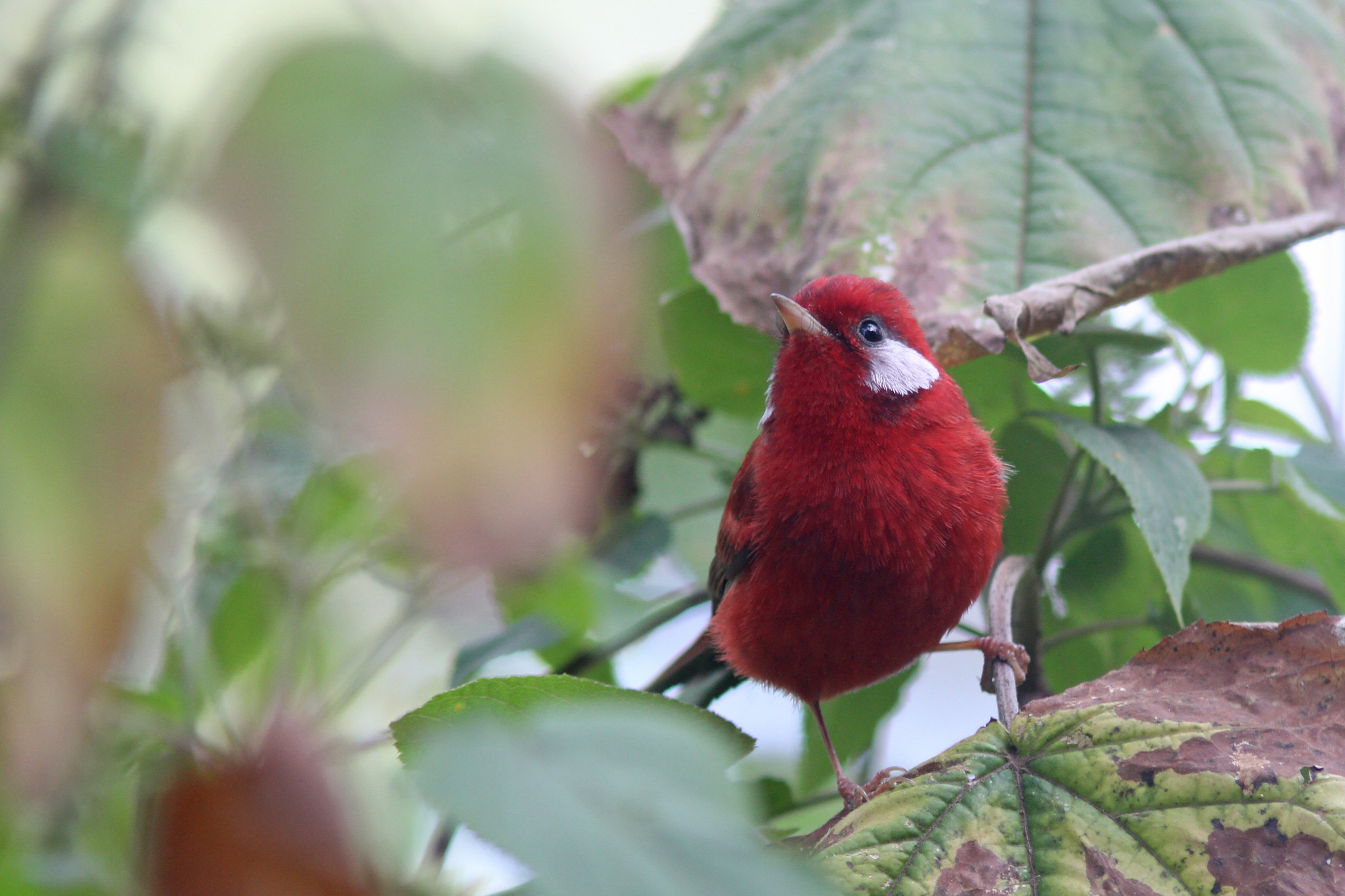 |
| Red Warbler, Parque Ejidal San Nicolás Totolapan,Mexico City, Jan 31, 2019 |
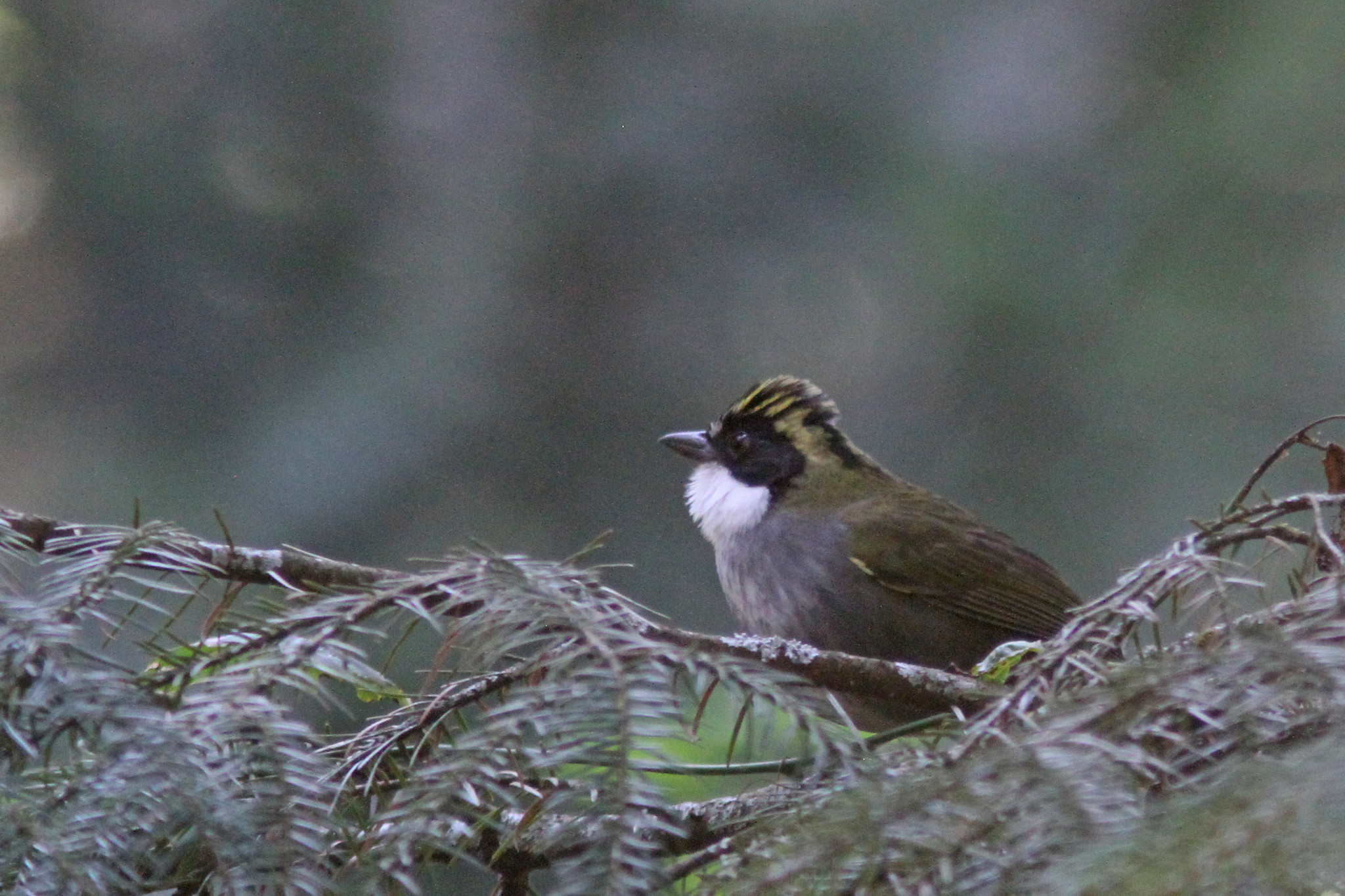 |
| Green striped Brushfinch, Parque Ejidal San Nicolás Totolapan,Mexico City, Jan 31, 2019 |
After a quick lunch we headed into the forests of
Parque San Nichols to the south of the city in search of the last target bird for the day, the Red Warbler. After a bit of looking we found a few Red Warblers including one that was very obliging and offered spectacular looks and photo ops...a truly impressive little bird. During our search for the warbler we turned up a number of other species including three more lifers (Green striped Brushfinch, Rufous capped Brushfinch and Mexican Chickadee). I got dropped off at my lodging
Casa de la Vida in Tepoztlan around dinner time and got ready for the next day.
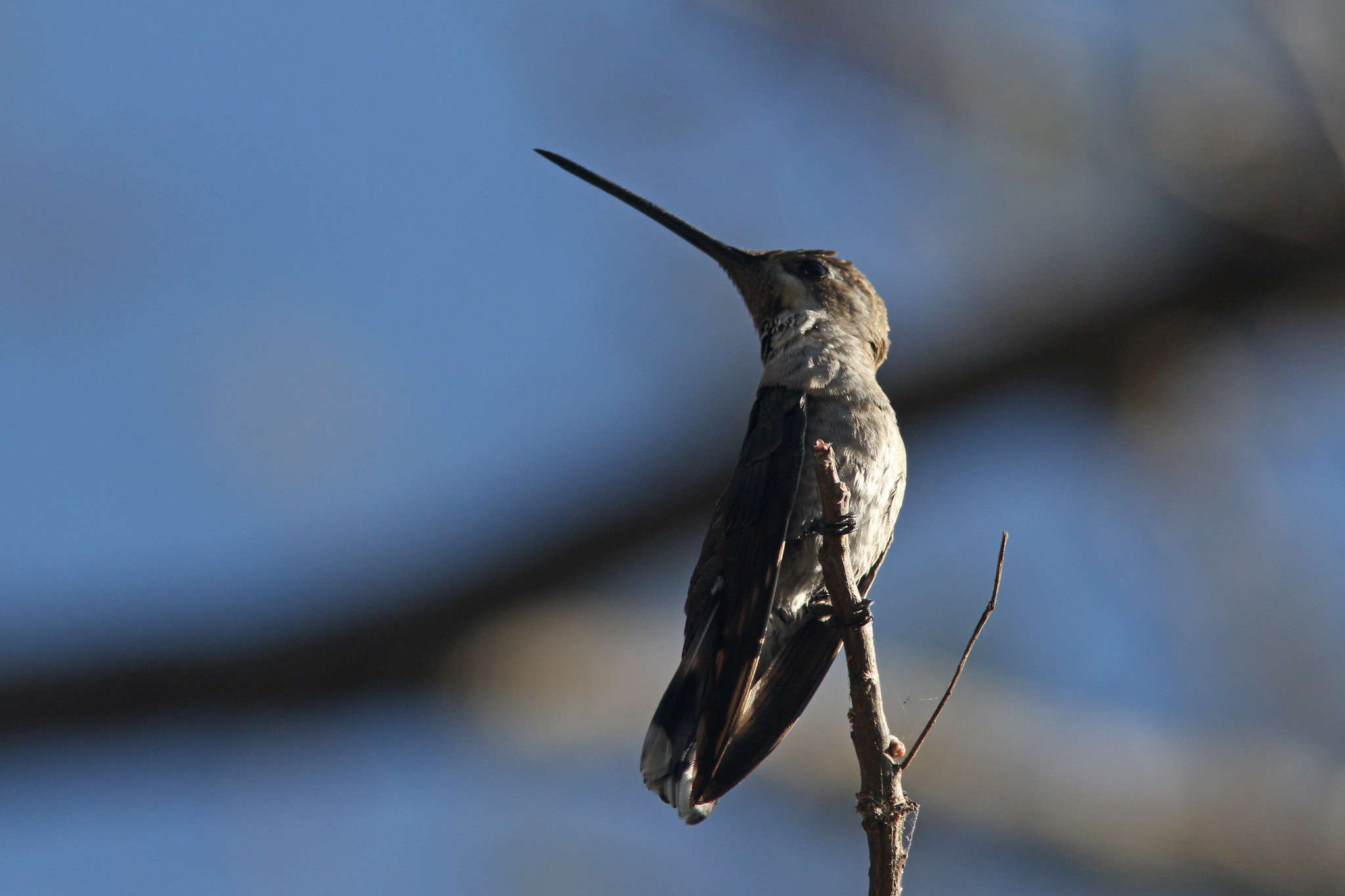 |
| Plain capped Starthroat San Andres de la Cal, Morelos, Mexico, Feb 1, 2019 |
 |
| Black chested Sparrows, San Andres de la Cal, Morelos, Mexico, Feb 1, 2019 |
 |
| Stripe headed Sparrow, San Andres de la Cal, Morelos, Mexico, Feb 1, 2019 |
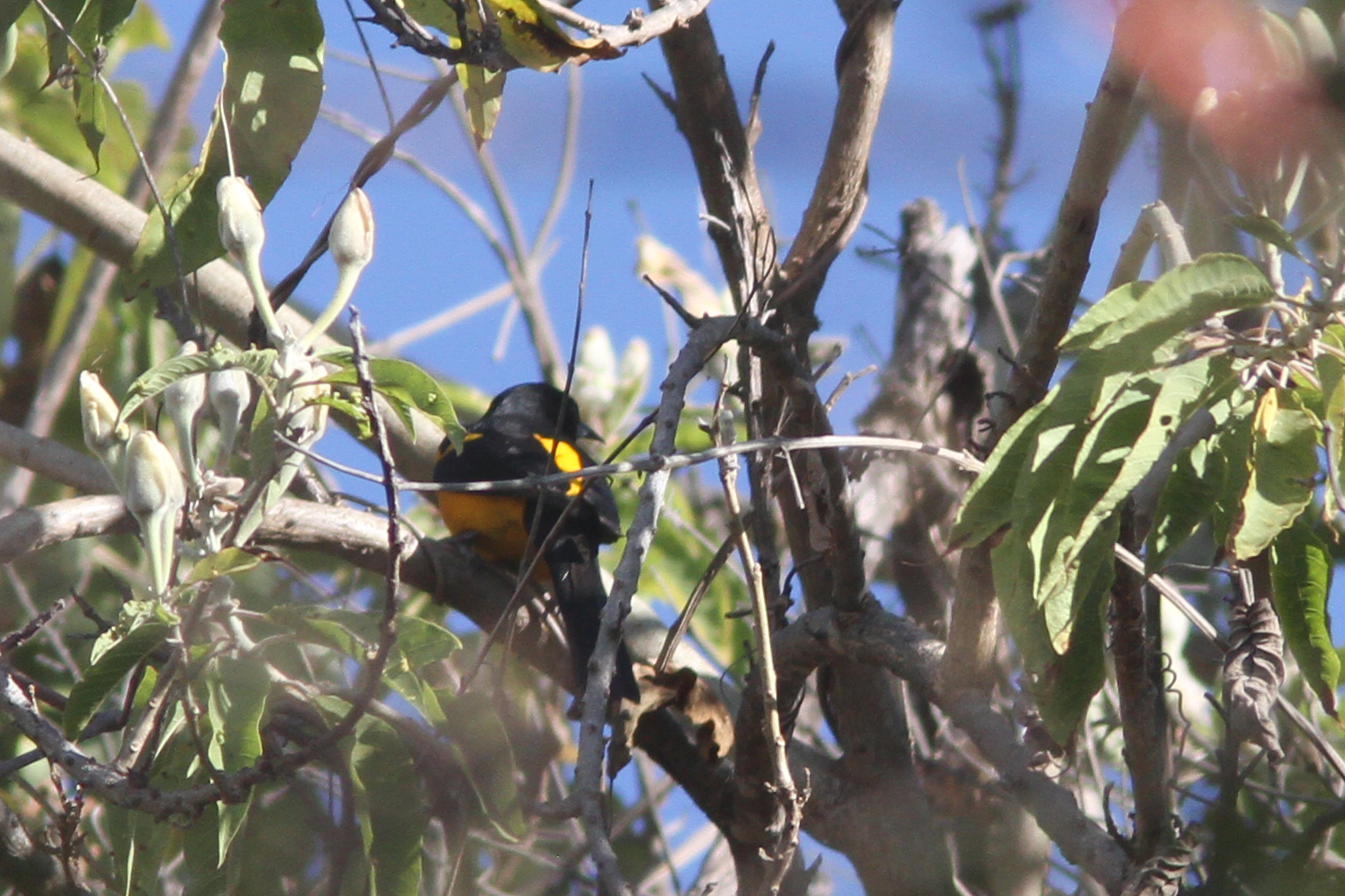 |
| Black vented Oriole, San Andres de la Cal, Morelos, Mexico, Feb 1, 2019 |
 |
| Golden Vireo (species #1400 for me!), San Andres de la Cal, Morelos, Mexico, Feb 1, 2019 |
 |
| Streak backed Oriole, San Andres de la Cal, Morelos, Mexico, Feb 1, 2019 |
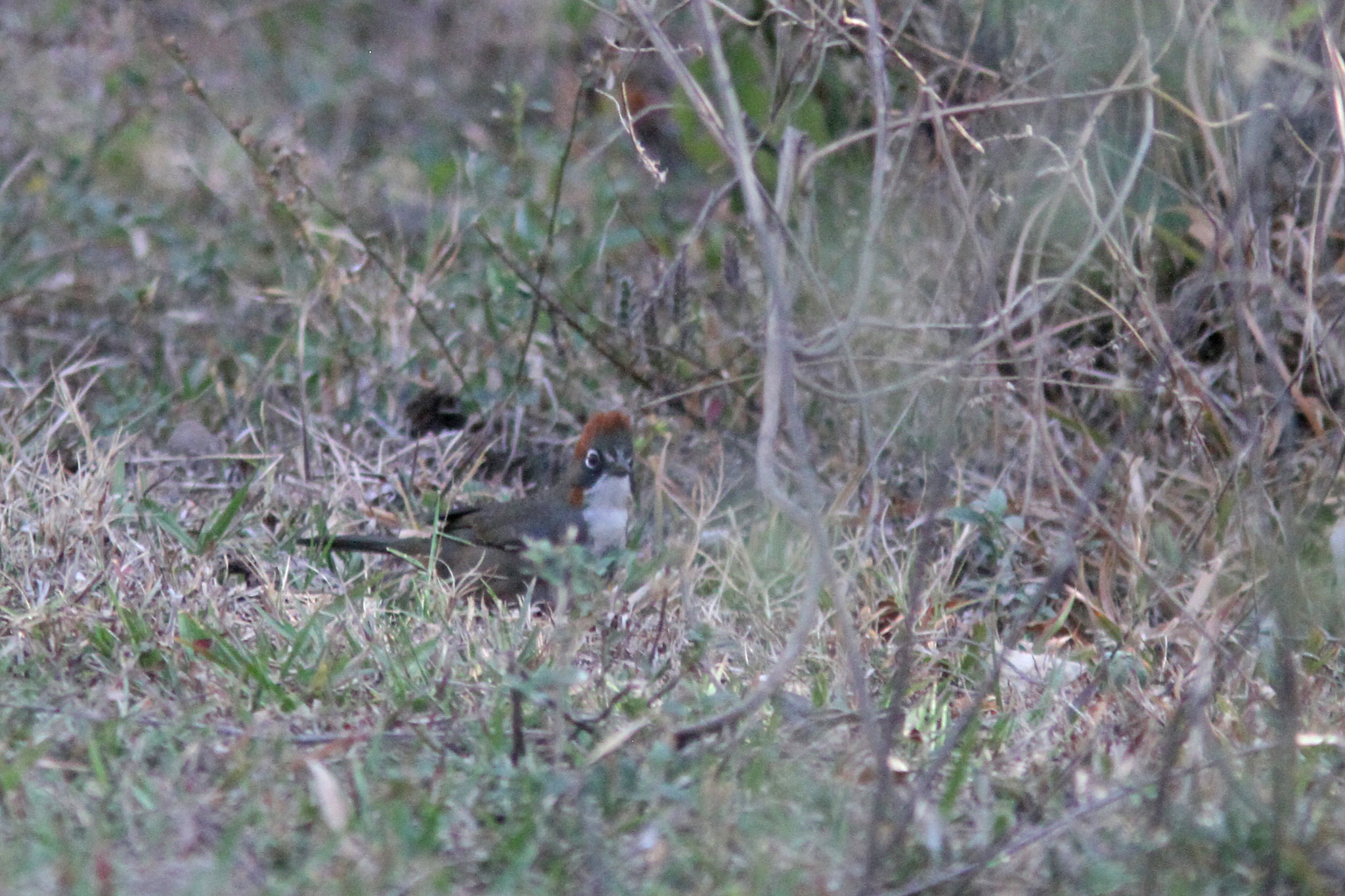 |
| Rusty crowned Ground Sparrow, San Andres de la Cal, Morelos, Mexico, Feb 1, 2019 |
We made some changes to the itinerary for the second day of birding as I got great looks and photos of the three target warblers on the first day (the original plan was to keep the second day open to get any of the warblers we missed). Instead we decided to spend the day catching up with as many local endemics as we could south of Mexico City. The birding day started with a 7AM pick up at my lodging and a life bird when we had a couple Blue Mockingbirds before we even started driving. We then drove down to
San Andres de la Cal south of Tepoztlan to bird for a couple hours. The area was quite productive and I added fifteen lifers including my 1400th life bird (Golden Vireo)
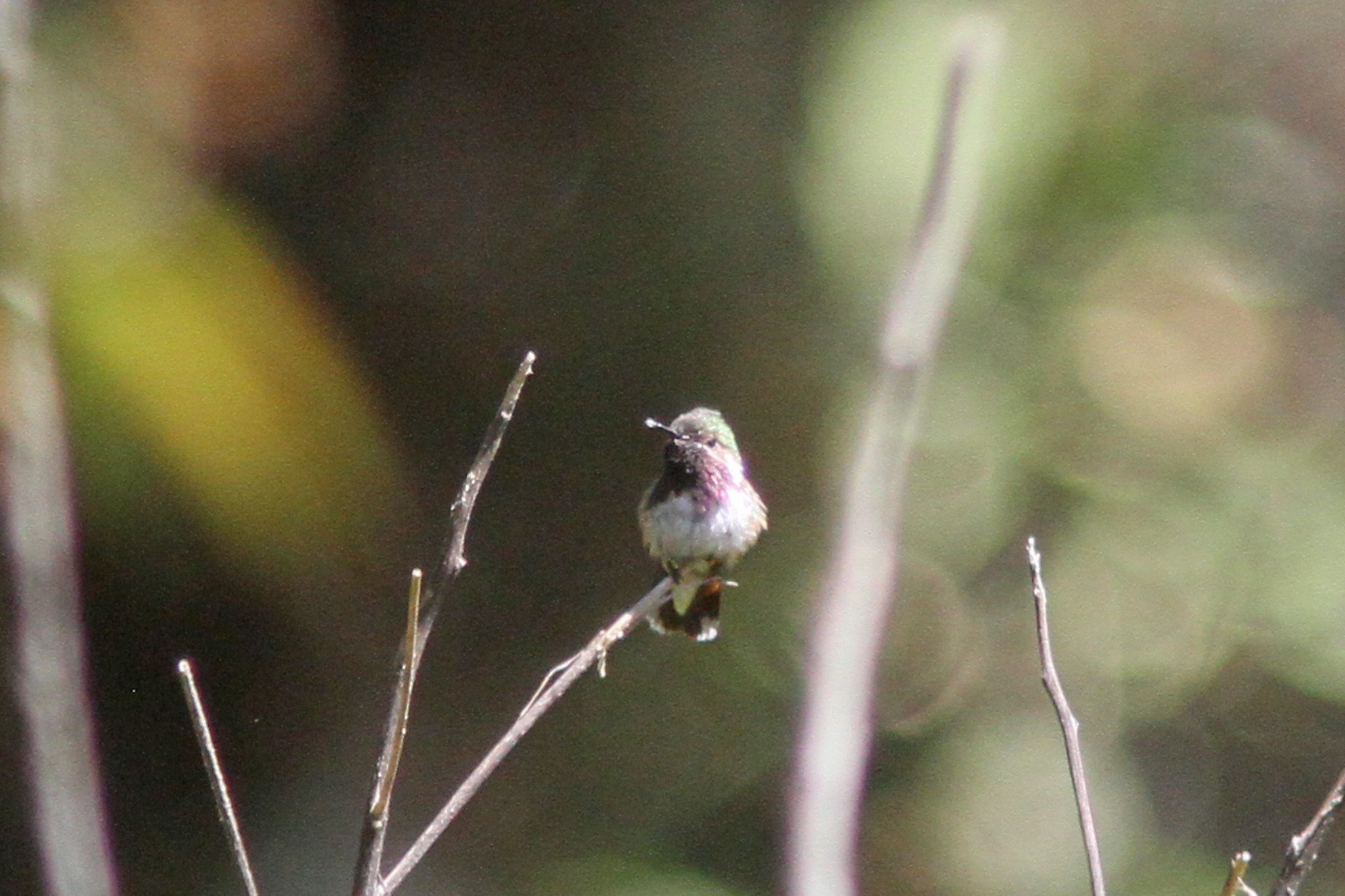 |
| Bumblebee Hummingbird, Camino San Juan Tlacotenco-Coajomulco, Morelos, Mexico, Feb 1, 2019 |
 |
| Band tailedPigeon, Camino San Juan Tlacotenco-Coajomulco, Morelos, Mexico, Feb 1, 2019 |
 |
| Golden browed Warbler, Camino San Juan Tlacotenco-Coajomulco, Morelos, Mexico, Feb 1, 2019 |
We then headed back to a slightly higher elevation and drove a dirt road (
Camino San Juan Tlacotenco-Coajomulco) that hit a number of different habitats and produced several life birds including Bumblebee Hummingbird, White striped Woodcreeper and Transvolcanic Jay. There were a number of migrants from the north in the area as well as resident birds.
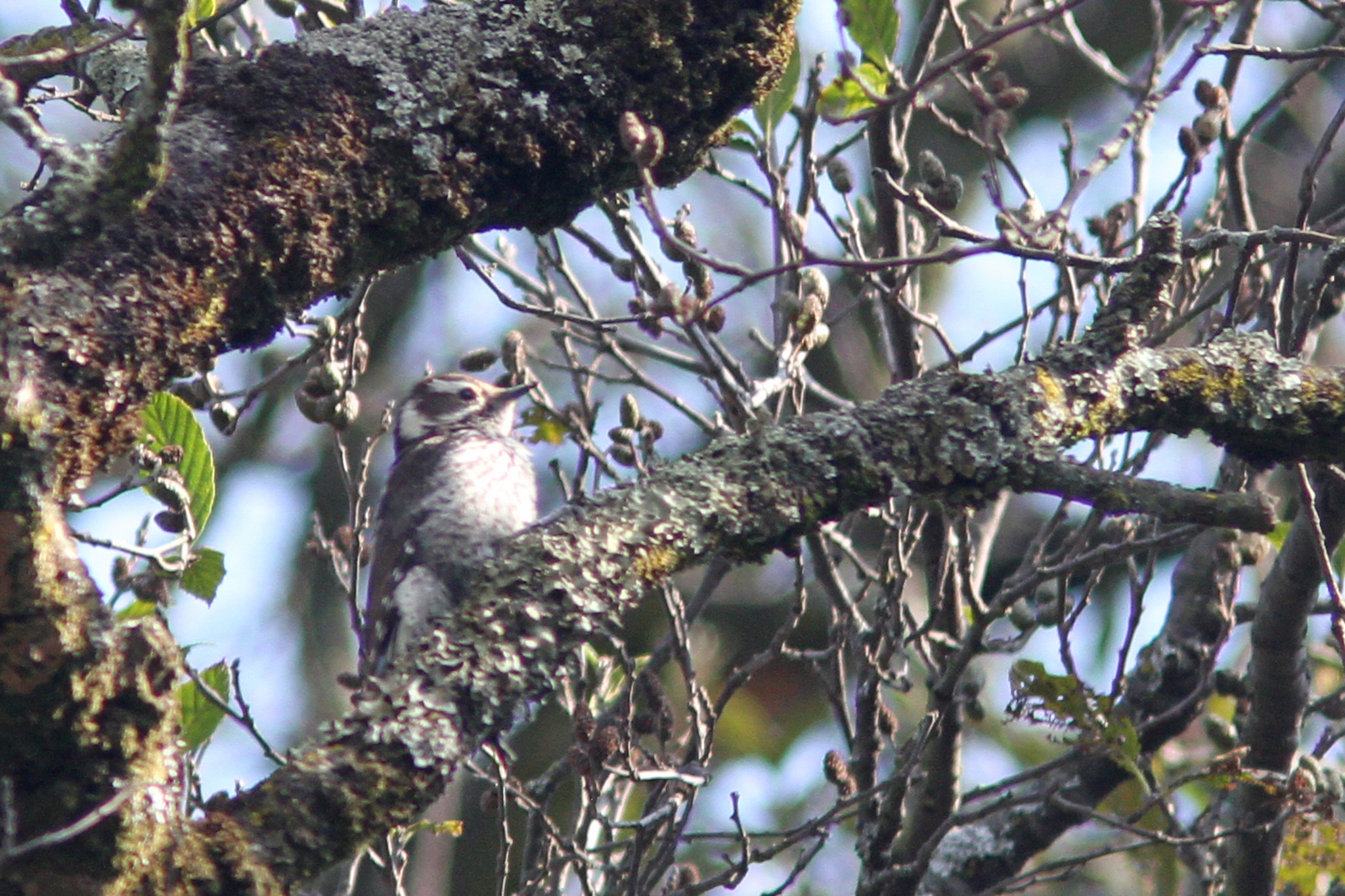 |
| Strickland's Woodpecker, Parque Las Maravillas, Mexico City, Mexico, Feb 1, 2019 |
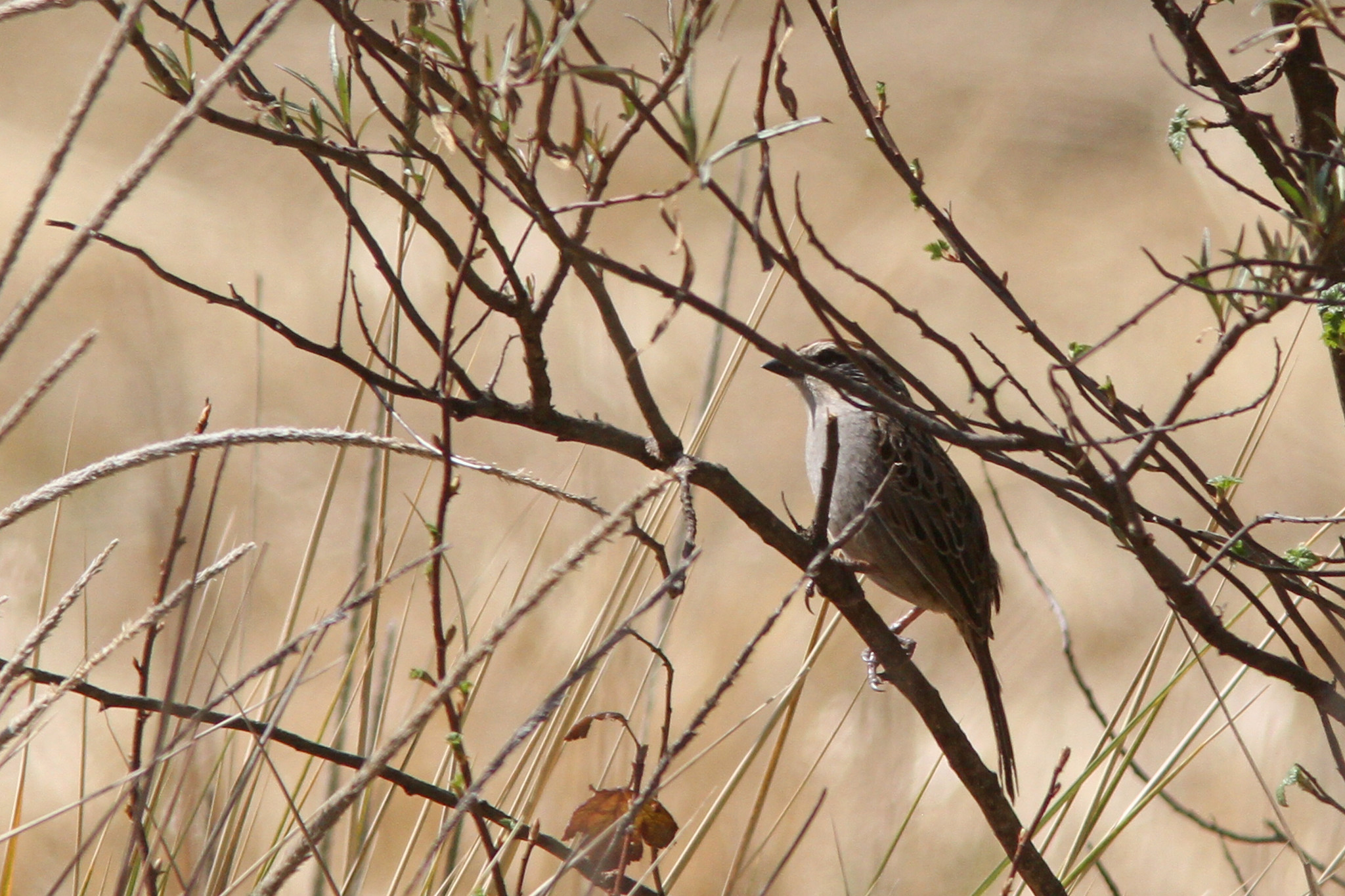 |
| Striped Sparrow, Parque Las Maravillas, Mexico City, Mexico, Feb 1, 2019 |
Our final birding stop was after lunch to
Parque Las Maravillas about halfway between Tepoztlan and Mexico City which contains a mix of bunch grass fields and forested areas. We attempted to find the very local Sierra Madre Sparrow but we missed it despite some effort...it was late in the day, a bit breezy and the birds are tough to find on a good day. After our time in the grasslands we hiked up a bit into the forest and had more luck there eventually finding Strickland’s Woodpecker, Striped Sparrow and Russet Nightingale Thrush. We headed back to the traffic and noise of the city.
 |
| Altamira Yellowthroat, Rt 85, Tamaulipas, Mexico, Feb 2, 2019 |
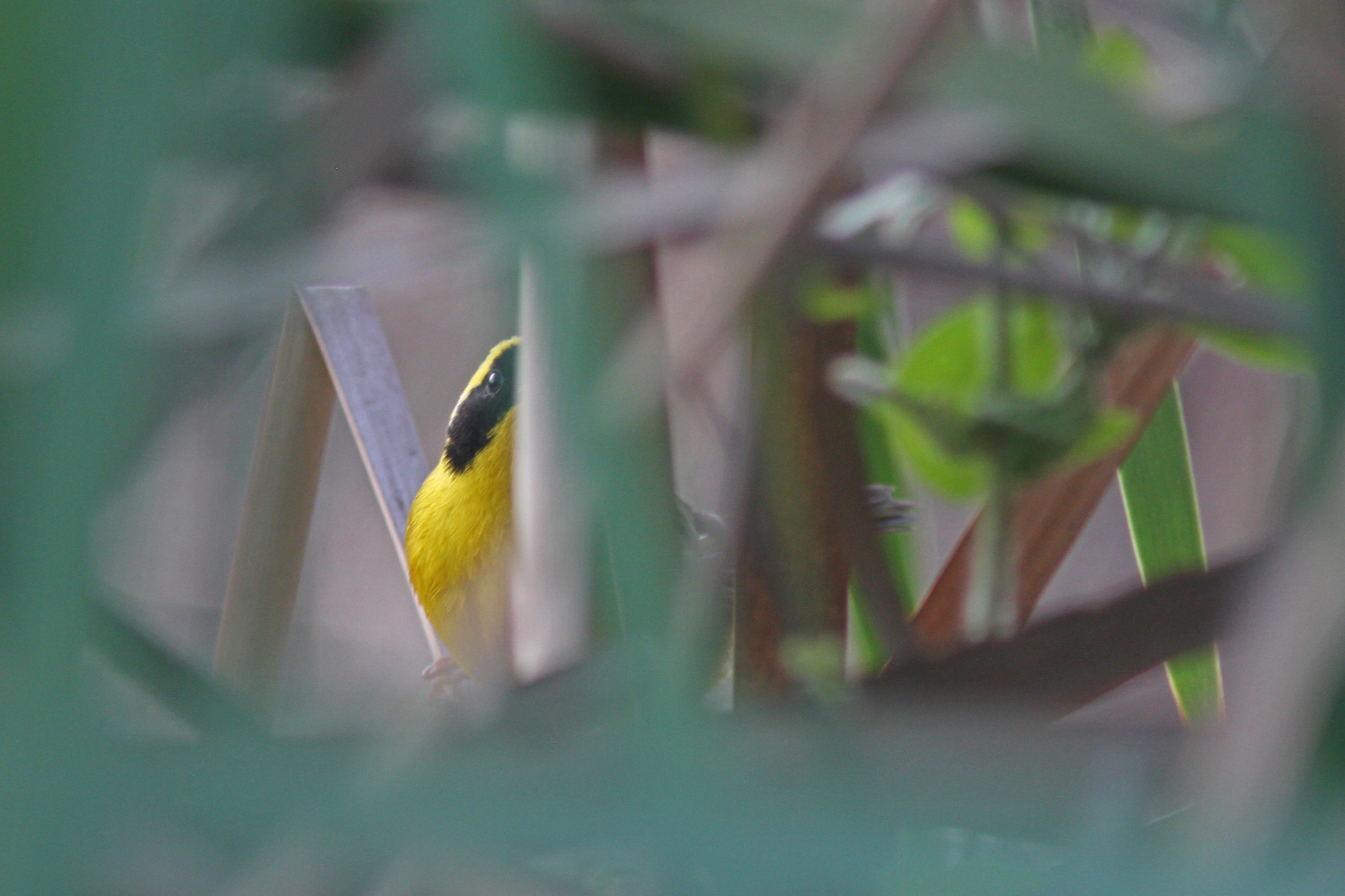 |
| Altamira Yellowthroat, Rt 85, Tamaulipas, Mexico, Feb 2, 2019 |
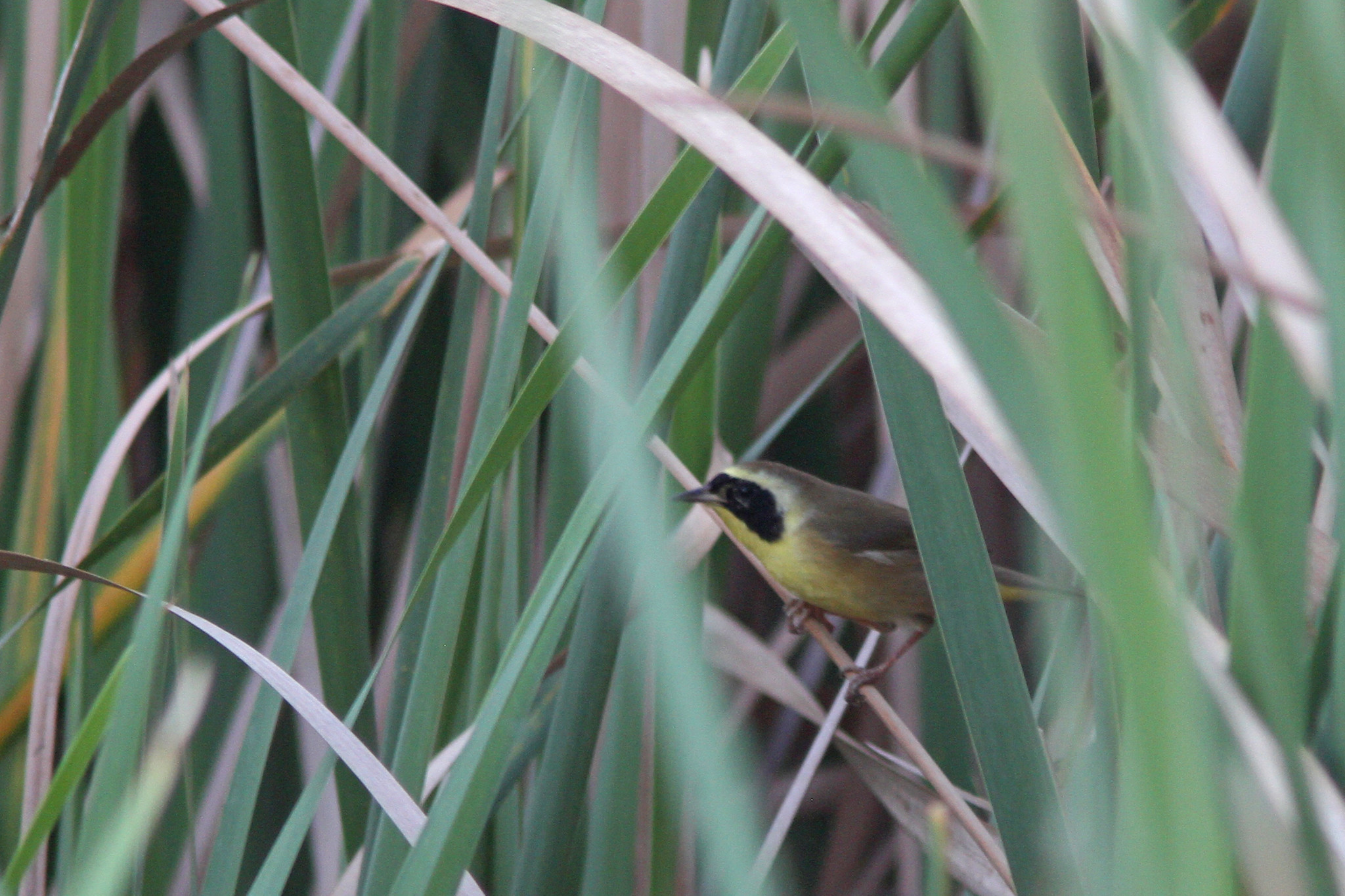 |
| Common Yellowthroat, Rt 85, Tamaulipas, Mexico, Feb 2, 2019 |
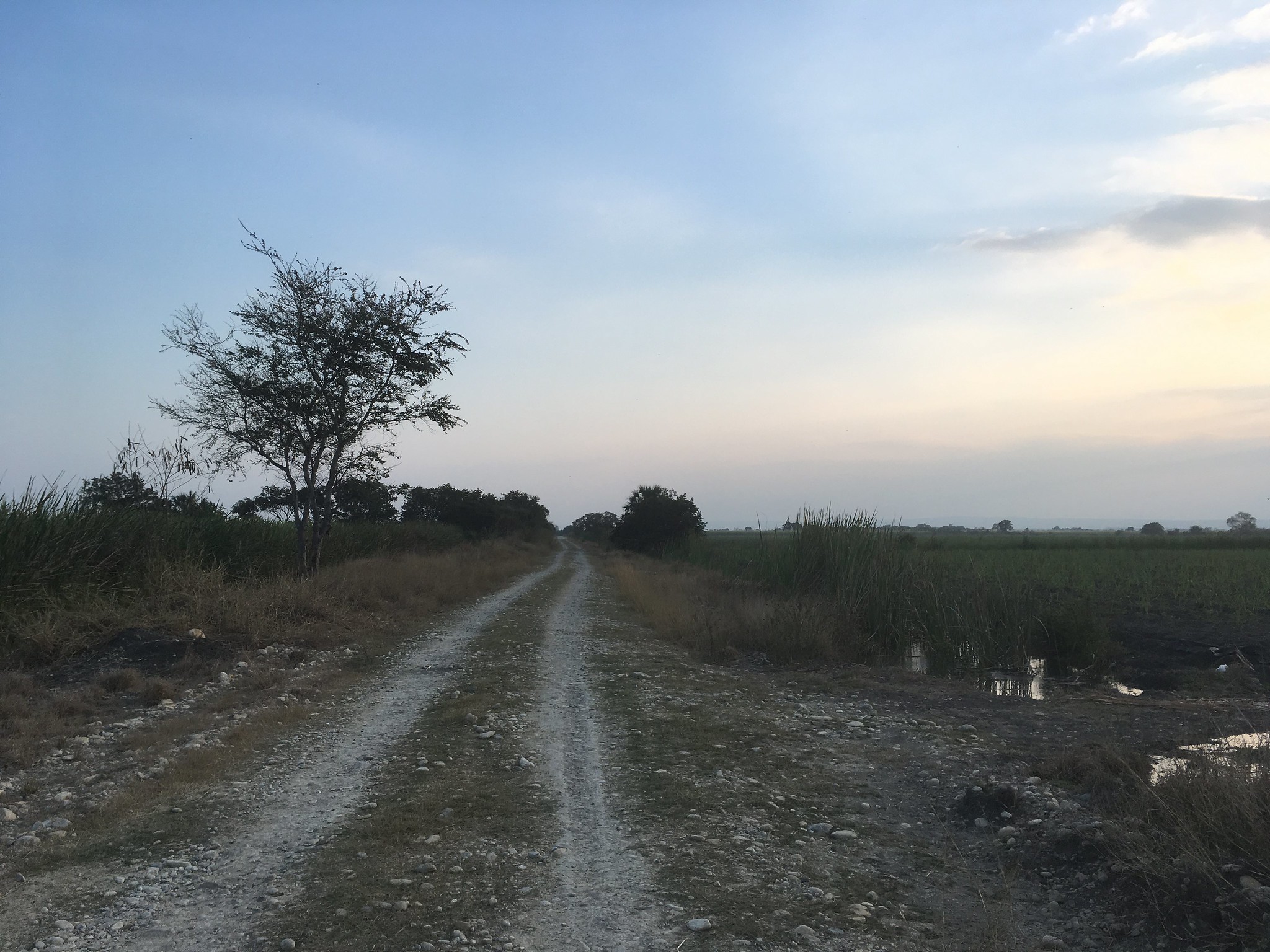 |
| Altamira Yellowthroat habitat among the sugarcane fields, Rt 85, Tamaulipas, Mexico, Feb 2, 2019 |
 |
| Altamira Yellowthroat habitat among the sugarcane fields, Rt 85, Tamaulipas, Mexico, Feb 2, 2019 |
On Saturday I took a flight midday from Mexico City up to Tampico to meet my next guides for birding north of Tampico and into El Cielo Reserve with the main target being Altamira Yellowthroat. It was a long drive up to our first
stop which was some remnant marshy areas in search of the yellowthroat (really no more than ditches along the vast sugarcane plantations). The initial location we stopped produced a number of Common Yellowthroats but not the yellowthroat we were searching for. Our next
stop proved more productive with several Altamira Yellowthroats found among even more Common Yellowthroats. The birds were very skulking and would never totally come out into the open so I was quite happy to get some half way decent shots.
 |
| Tamualipas Crows, Rt 85, Tamaulipas, Mexico, Feb 2, 2019 |
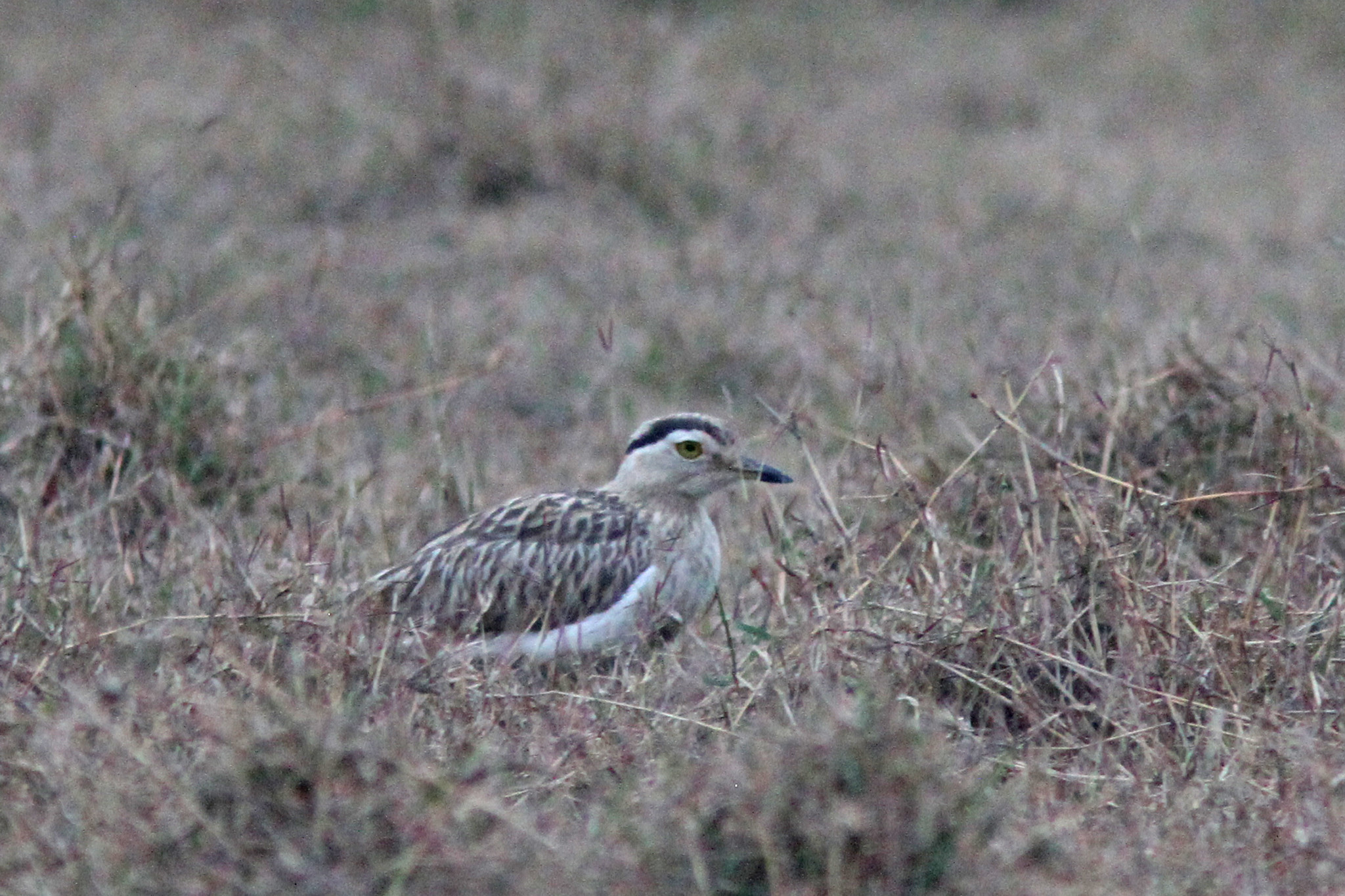 |
| Double striped Thick Knee, Rt 85, Tamaulipas, Mexico, Feb 2, 2019 |
 |
| Esteban holding my airport sign with a Altamira Yellowthroat on it, Feb 2, 2019 |
With the sun fading fast we headed out to our next stop just down the road where a flock of Tamaulipas Crows were sitting of power lines before heading to roost and where we met up with another guide (Mario) and changed vehicles. From there it was down another dirt road where we found a couple Double stripped Thick Knee out in a horse pasture. Our attempts to find a Crane Hawk failed but the light was fading fast. Once we arrived in Gomez Farias we had dinner and then searched around the town square for a Stygian Owl which we eventually found perched at the top of a large tree...a great ending to the day!
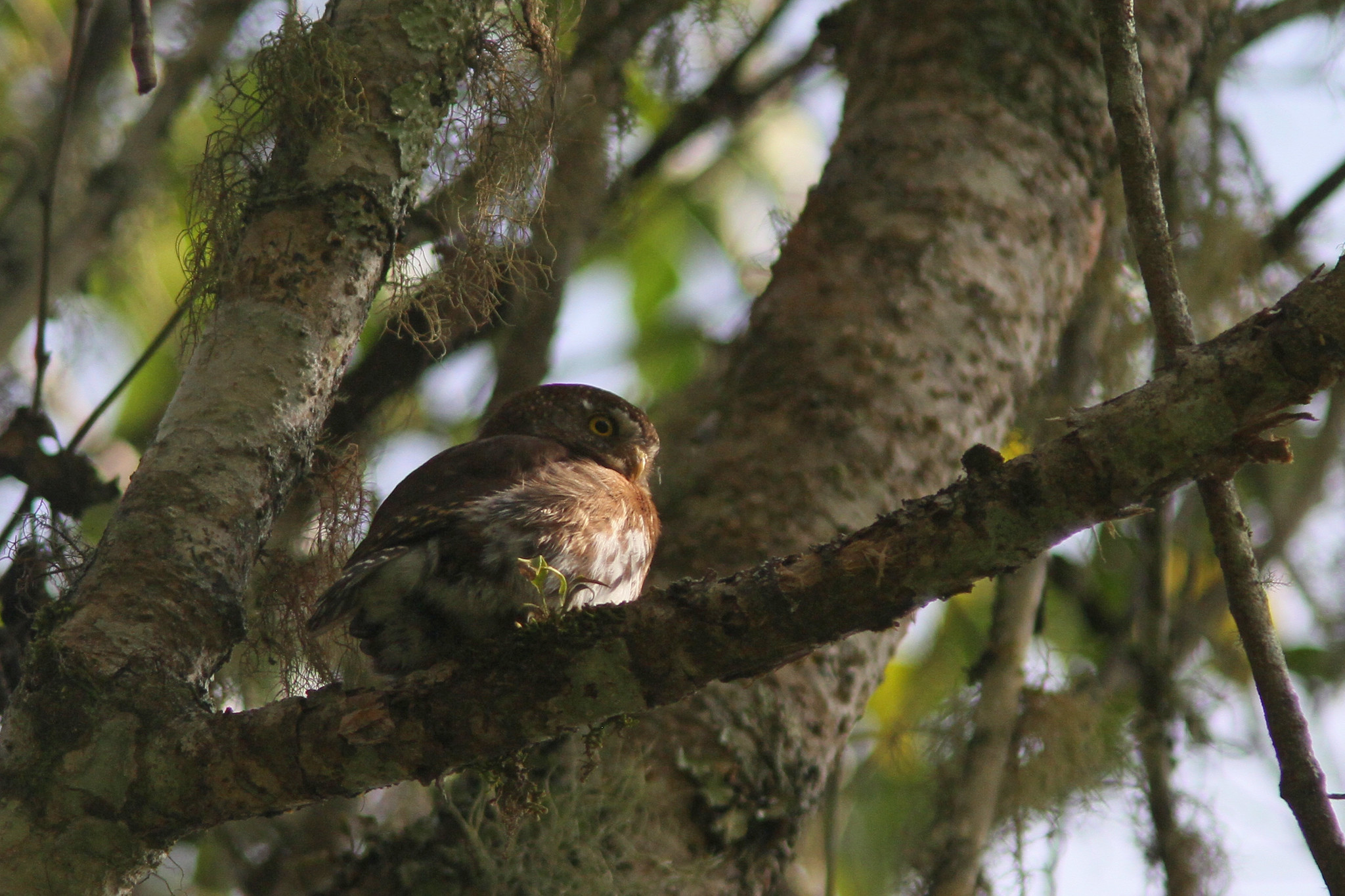 |
| Tamaulipas Pgymy Owl, El Cielo Reserve, Tamaulipas, Mexico, Feb 3, 2019 |
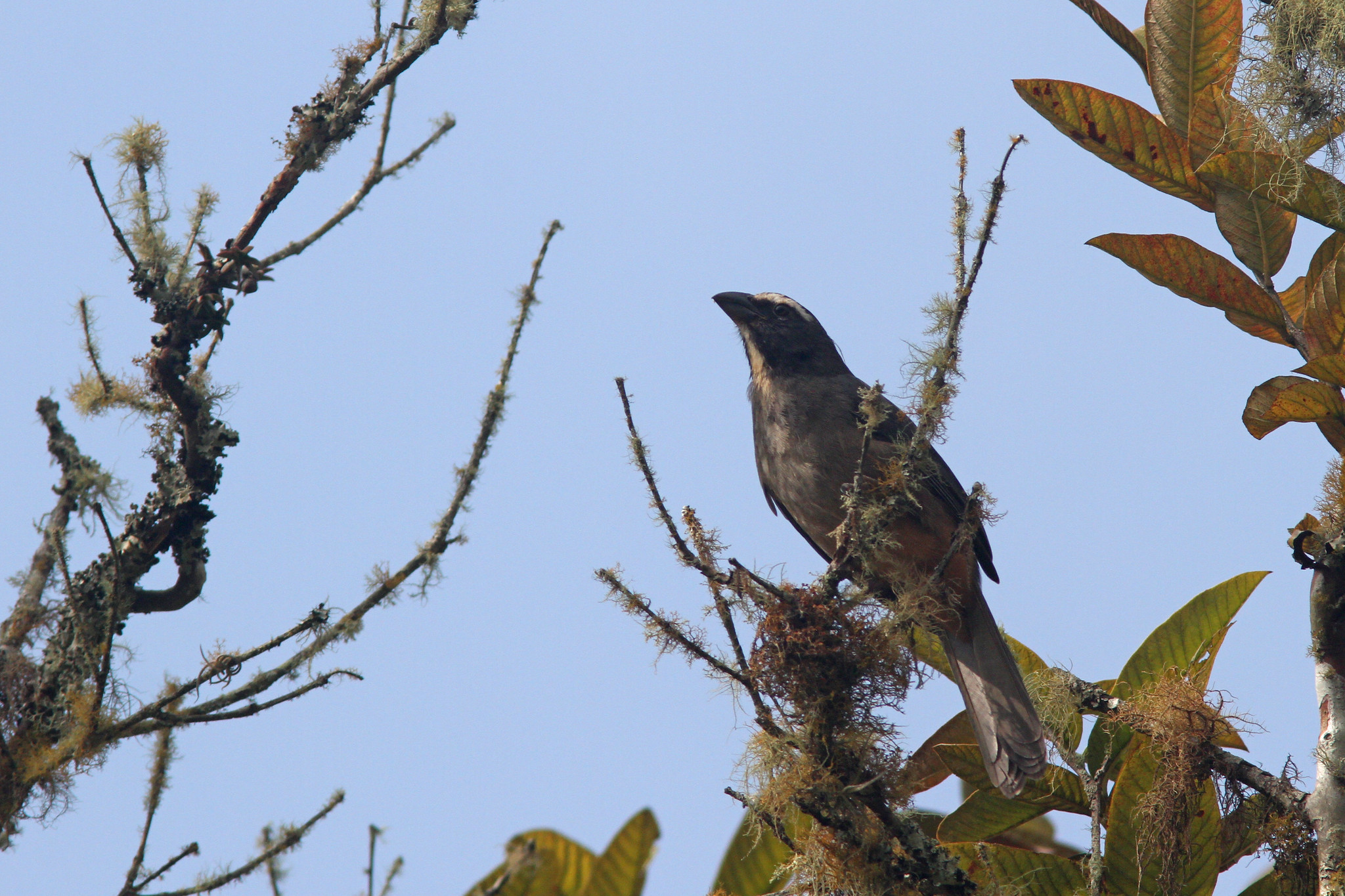 |
| Grayish Saltator, El Cielo Reserve, Tamaulipas, Mexico, Feb 3, 2019 |
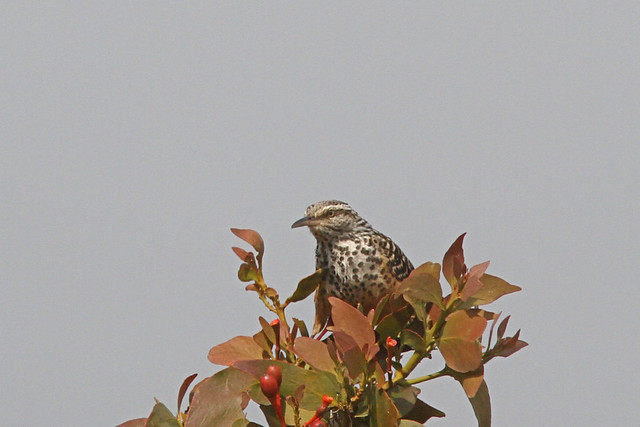 |
| Band backed Wren, El Cielo Reserve, Tamaulipas, Mexico, Feb 3, 2019 |
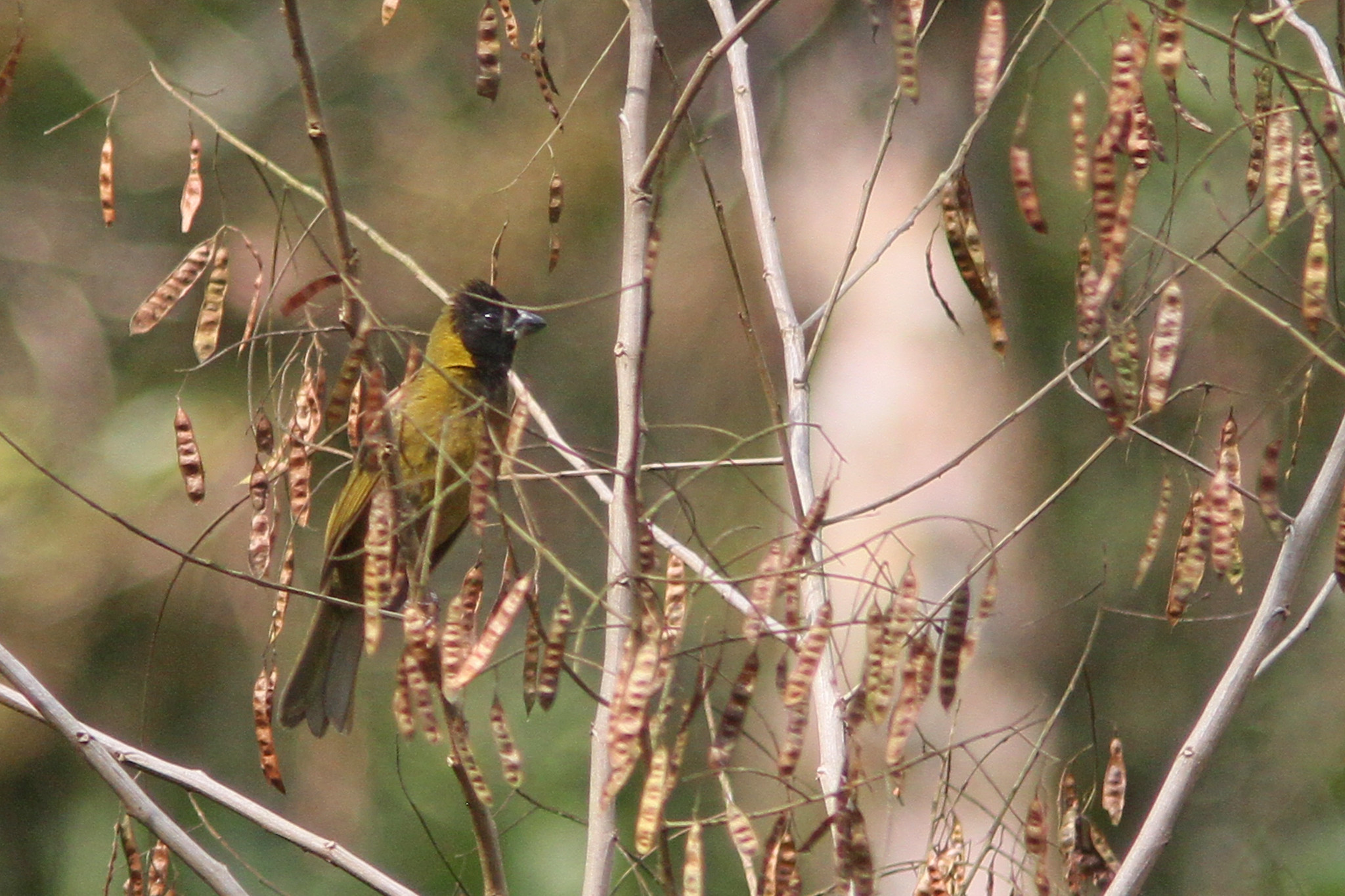 |
| Crimson collared Grosbeak, El Cielo Reserve, Tamaulipas, Mexico, Feb 3, 2019 |
 |
| Blue Bunting, El Cielo Reserve, Tamaulipas, Mexico, Feb 3, 2019 |
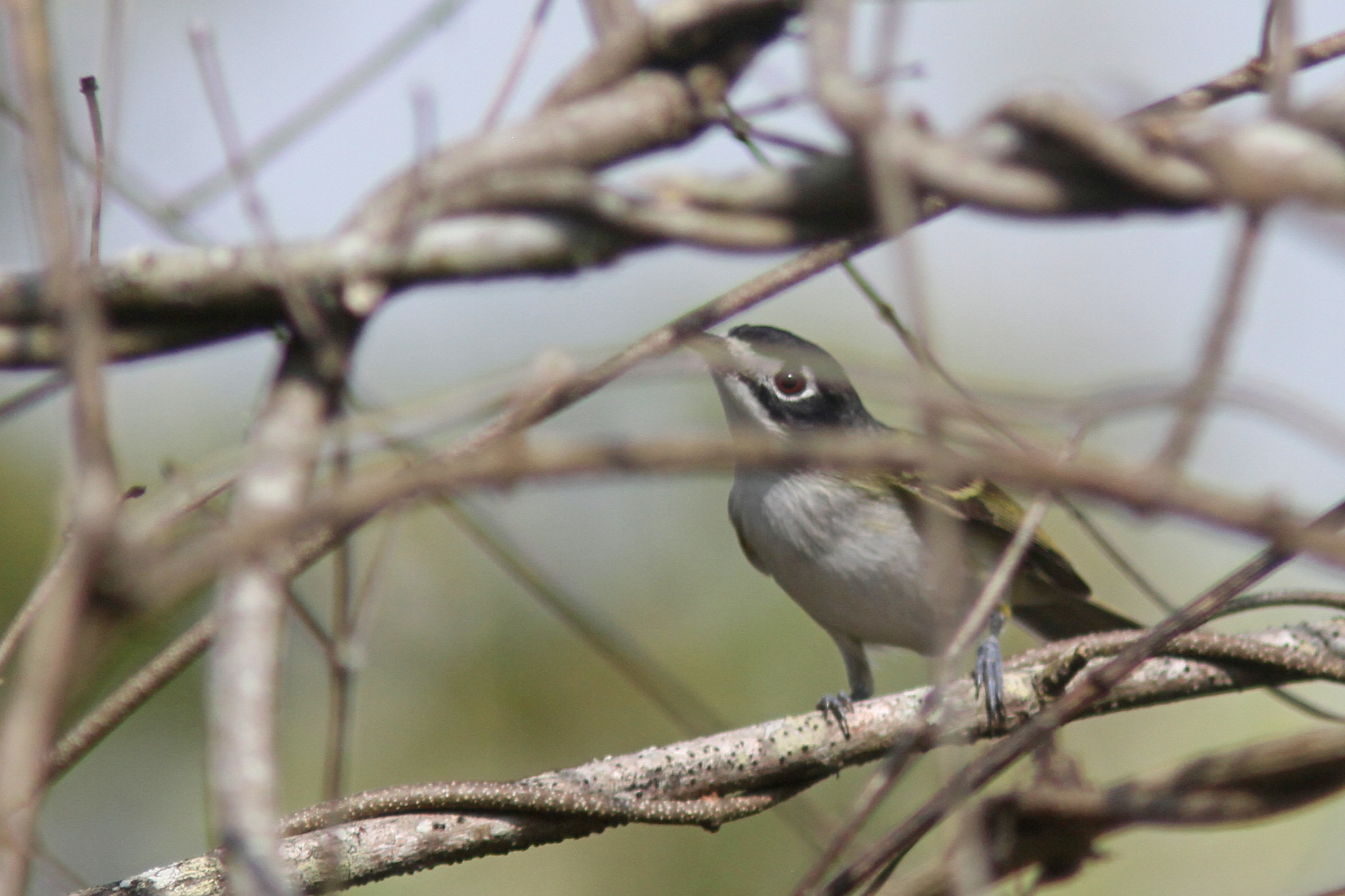 |
| Black capped Vireo, El Cielo Reserve, Tamaulipas, Mexico, Feb 3, 2019 |
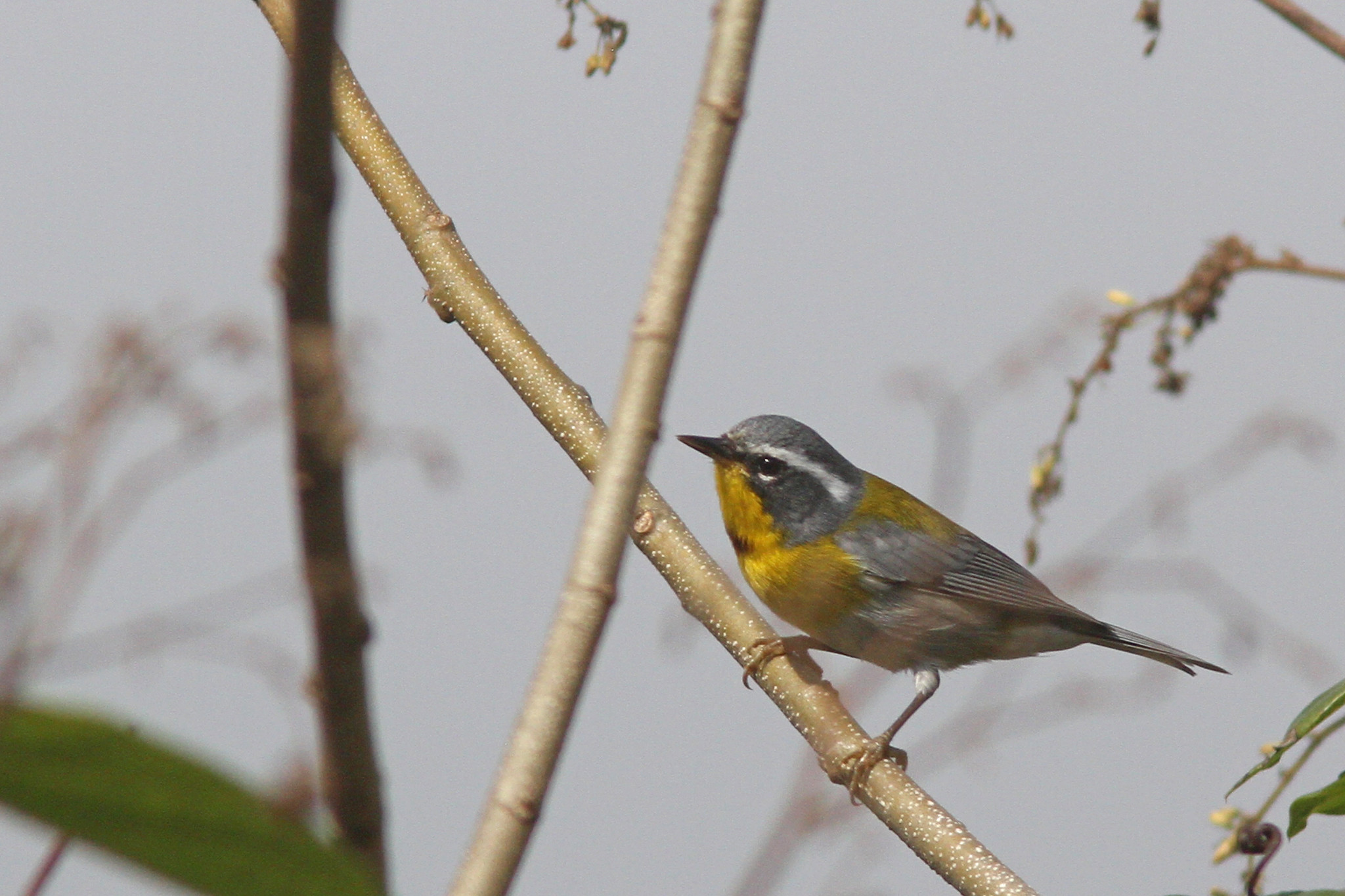 |
| Crescent chested Warbler, El Cielo Reserve, Tamaulipas, Mexico, Feb 3, 2019 |
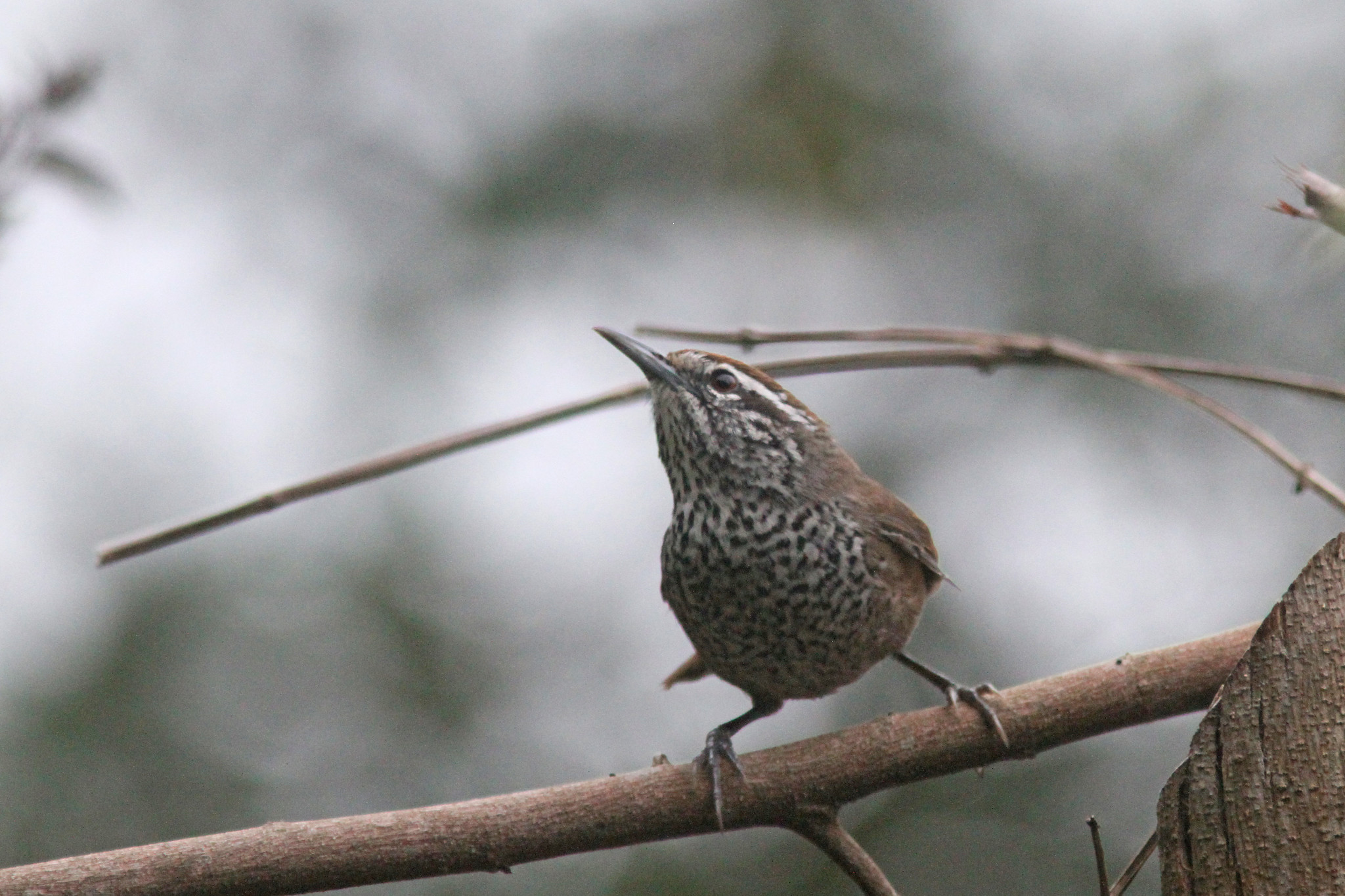 |
| Spot breasted Wren, El Cielo Reserve, Tamaulipas, Mexico, Feb 3, 2019 |
 |
| Golden oilve Woodpecker (bronze winged) , El Cielo Reserve, Tamaulipas, Mexico, Feb 3, 2019 |
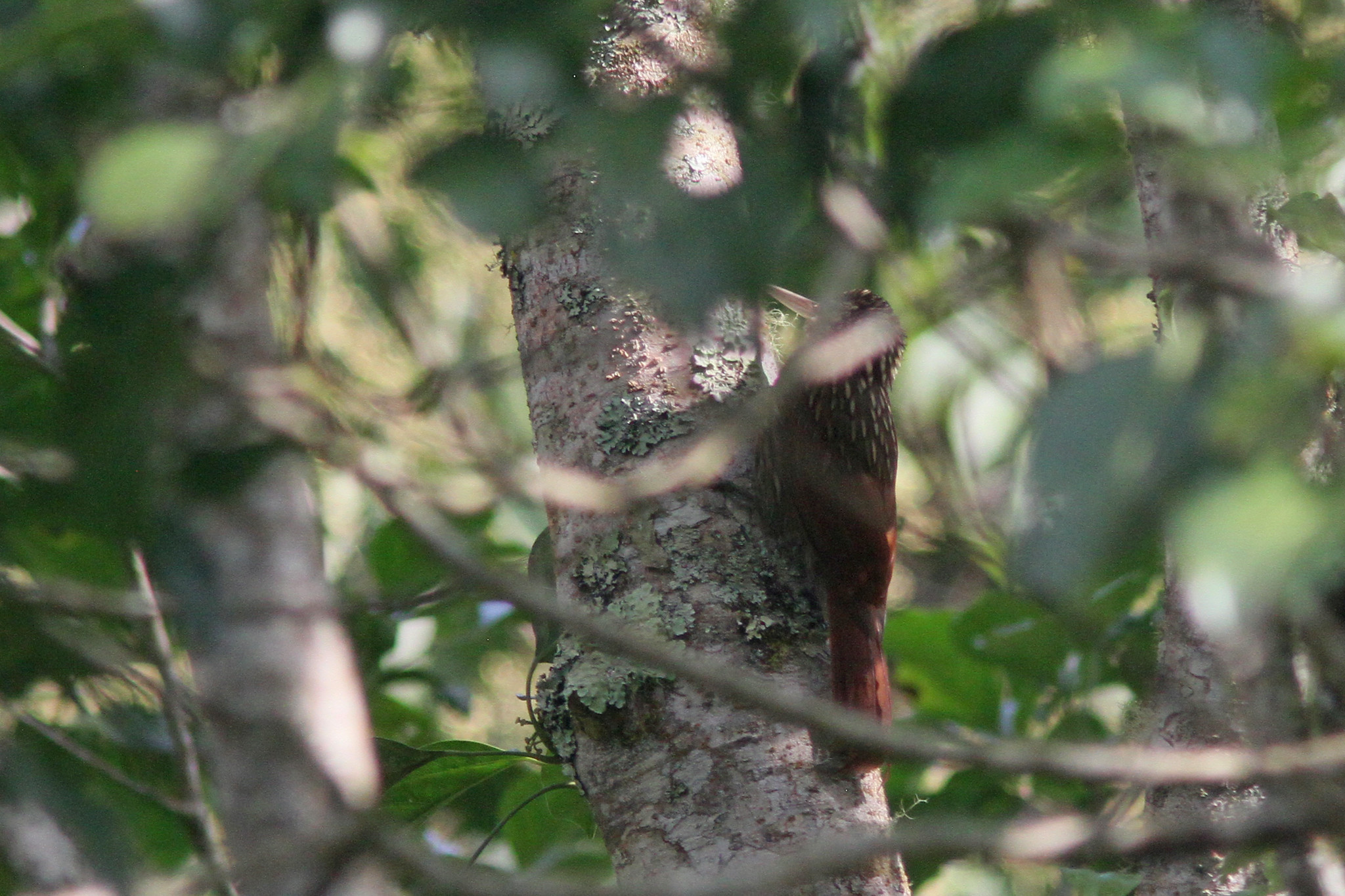 |
| Ivory billed Woodcreeper, El Cielo Reserve, Tamaulipas, Mexico, Feb 3, 2019 |
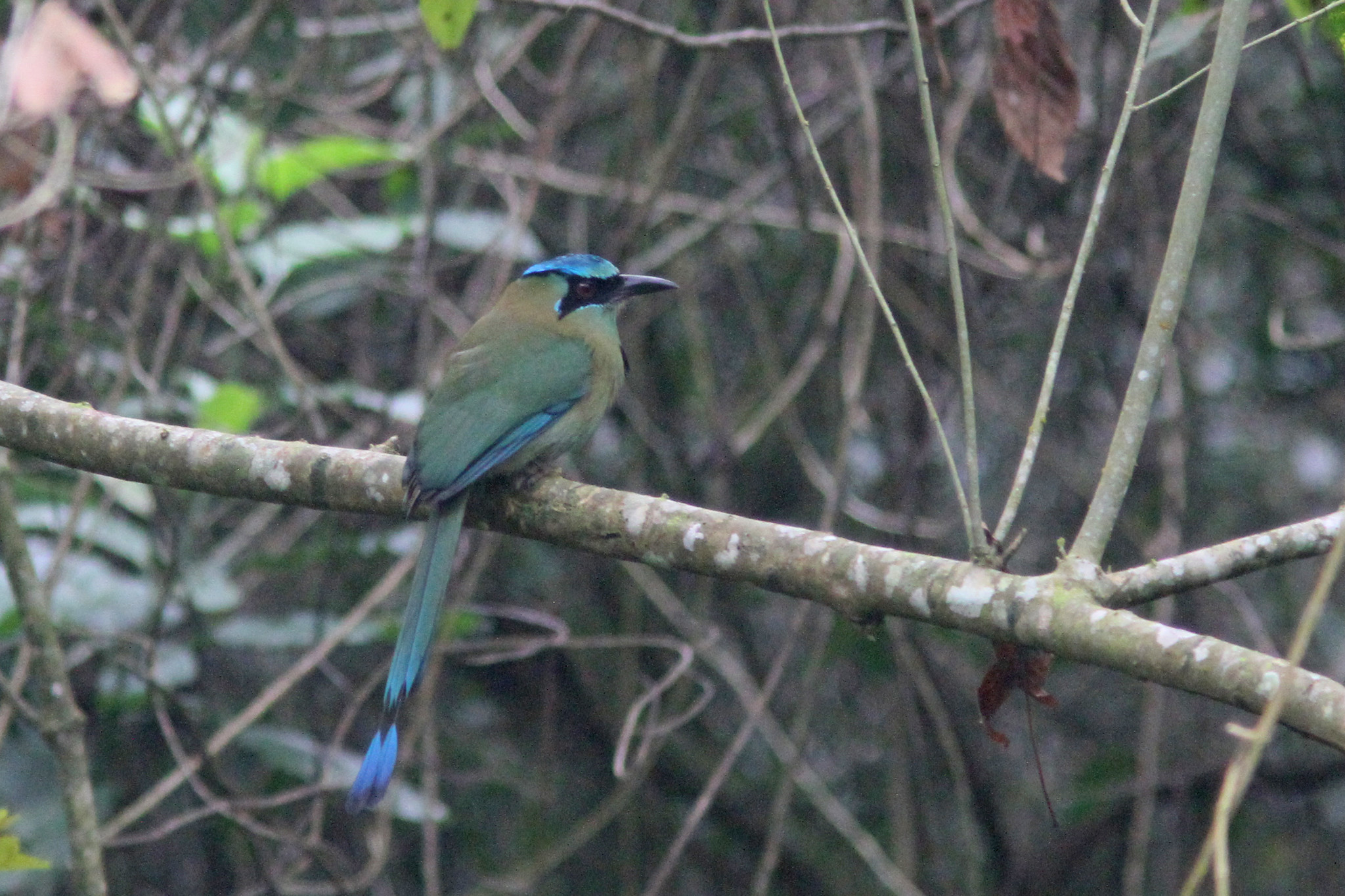 |
| Blue capped Motmot, El Cielo Reserve, Tamaulipas, Mexico, Feb 3, 2019 |
 |
| Audubon's Oriole, El Cielo Reserve, Tamaulipas, Mexico, Feb 3, 2019 |
 |
| Military Macaws, El Cielo Reserve, Tamaulipas, Mexico, Feb 3, 2019 |
 |
| Military Macaws, El Cielo Reserve, Tamaulipas, Mexico, Feb 3, 2019 |
 |
| Wedge tailed Sabrewing, El Cielo Reserve, Tamaulipas, Mexico, Feb 3, 2019 |
 |
| View of mountains with orange trees (delicious oranges by the way!), El Cielo Reserve, Tamaulipas, Mexico, Feb 3, 2019 |
On my last full day I awoke to a bit of drizzle but we nonetheless headed out before dawn with a quick breakfast stop on the way. We then spent from sunrise until early afternoon in the
El Cielo Reserve where the low clouds and fog persisted for a bit before finally clearing off. Our main focus as we worked our way up the rough dirt road were species I had not seen before but were possible. We had great luck finding a number of life birds (ten for the day) with many of them endemic to the area. So many highlights including a juvenile Ornate Hawk Eagle, a large vocal gathering of Military Macaws, many Wedge tailed Sabrewings, great looks at Tamaulipas Pygmy Owls, Band backed Wrens and Spot breasted Wrens, multiple Audubon’s Oriole, a few pairs of Crimson collared Grosbeaks, a male Blue Bunting in great light and Grayish Saltators plus a rare for the area Black capped Vireo (perhaps the first photo documented record?). We ended the day around two and began the long drive back to Tampico and my flight out the next day.
Overall the trip produced a total of 214 species with 44 of those being life birds. My total life species now stands at 1428. A link to all the photos from the trip can be found in this
flickr album.
I could have not have done the trip without the expert guiding while I was down there. I started the planning process by contacting Eric Antonio Martinez at
Mexico Birding Tours and explaining what I wanted to see and where I wanted to go. He responded immediately and was helpful throughout the whole process. He got me in touch with a guides from each location (Rafa Calderon in the Mexico City area and Esteban and Mario in Tamaulipas). All the guides were fantastic and really knew their respective areas. I would not hesitate at all to make another trip down there and would once again line up everything through Mexico Birding Tours.





















































No comments:
Post a Comment